A companion blog to The Commander Table youtube channel. I'm Dennis: long-time Magic player: mostly Commander, Artisan Commander and occasionally Draft. Level 1 Judge.
Don't wanna be here? Send us removal request.
Text
Why You Should Play More Lands in Commander (And Less Ramp, But More Card Draw)
I'm probably not going to be the first Magic person on the internet to tell you that you should be playing more lands in your Commander decks. I probably won't be the last. But hopefully I'll do a good job of explaining why you should play more lands—well enough that you'll take it to heart. If you're looking to increase your win rate in Commander, likely the most impactful change you can make is to play a sufficient number of lands. This post should help you determine what that number is for your deck. I'll also be talking about how much ramp you should be playing, and towards the end I'll touch briefly on card draw and card selection, as all of these categories are involved in optimizing a deck's mana output.
To start, consider this opening hand for a Gishath, Sun's Avatar deck: Battlefield Forge, Forest, Farseek, Rampant Growth, Wayward Swordtooth, Harmonize, and Ghalta, Primal Hunger. I think we can agree that this a hand we should keep; it's got all 3 of its colors, it's got ramp and card draw.
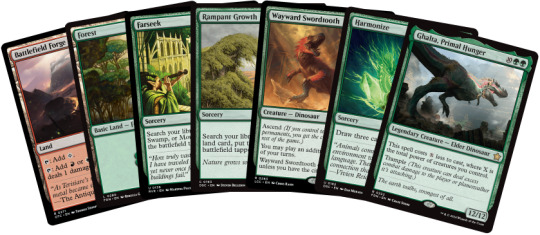
But let's talk about how this hand plays out if we don't draw a land in the first three turns. Turn 1, we play Battlefield Forge. Turn 2, we play Forest and either Farseek or Rampant Growth. So on Turn 3, with three lands, we have the choice of either playing the Swordtooth or the other ramp spell. If we knew for sure that we're going to draw a fourth land next turn, we'd almost certainly play Wayward Swordtooth here so that it's out when we cast Harmonize the following turn; it will let us play an extra land if there's at least one off the Harmonize, and its five power discounts that Ghalta in our hand. But if we play the Wayward Swordtooth and still don't draw a land on turn 4, the only thing we can do that turn is play the other ramp spell so we can Harmonize the following turn. It's an awkward turn 3.
So what are the odds here, of not drawing a land for the first three turns? Let's say this Ghalta deck has 35 lands in it. With two lands in our opening hand, there are 33 lands and 59 non-lands left among the remaining 92 cards in the library. Lets multiply together the chances that we don't draw a land for each of those draw steps.

So there's about a 26% chance we'll fail to draw a card in our first three turns and be faced with that turn 3 dilemma of whether to risk it with the Swordtooth or play the other ramp spell. Three out of four games with this hand we'll draw a land early and be curving out brilliantly, and that fourth game we come out of the gates awkwardly. That's not that bad! Like I said, it's a hand we should keep.
But what if, instead of two lands and two two-mana ramp spells, the hand had three lands and one two-mana ramp spell? We'll probably cast Harmonize on turn 3 and hope to find a spot later to cast Wayward Swordtooth. (We'll need to discard one card to hand size, but that's not a huge deal.) Guaranteeing that Harmonize on turn 3, regardless of whether we draw a land the first three turns, makes this hand a lot better than the previous one.
What if the hand had four lands and no two-mana ramp? We wouldn't cast anything on turn 2, but turn 3 we'd cast the Swordtooth and play our fourth land, and turn 4 we Harmonize with the chance to use both land drops. Not much worse than the previous example, and still better than the original hand.
The point I'm trying to make here is that in opening hands with few lands, ramp cards are often worse than just having another land. Ramp cards are only able to put you ahead on mana if you're already hitting your land drops. Rampant Growth only gets us to four mana on turn 3 if we've got at least three lands between the nine other cards we've seen so far. If we cast Explosive Vegetation with that four mana on turn 3, it'll get us to seven mana on turn 4 only if we've seen four lands out of the other nine cards (opening 7 + 4 draw steps - 2 ramp spells). Most decks aren't trying to go that hard with their ramp, but you can see that the more ramp cards you have, your deck should have a higher number of lands, not lower; I sometimes still encounter folks peddling the old "take out 1 land for each 2 ramp cards you add" deckbuilding advice. It's terrible advice—don't do that.
Another important thing to keep in mind with ramp cards: they're only good in the early game. For any given two-mana ramp spell, be it Rampant Growth, Farseek, or Arcane Signet, on average they'll only net you mana (over the course of the rest of the game) if they get played before or during turn 5, give or take a turn or two depending on the power level of your playgroup (generally the higher-power Commander a group plays, the fewer turns the games tend to last). Lands, on the other hand, can be good to draw at any point—you're more likely to want them early, but sometimes (not usually, but sometimes) you're still happy to draw one on turn 8.
In short, I think many players overvalue ramp cards in deckbuilding. I see them add lots of ramp at the expense of their decks' land counts, and it hampers them in a big way. That's not to say you shouldn't play ramp cards at all—they're an important part of most Commander decks provided they're included in the correct proportions. What those proportions are exactly will vary depending on the deck's needs, so let's have some examples.
Regarding the Gishath deck from earlier: 35 lands is too few for a deck that's looking to ramp into an eight-mana commander. (But how tempting it is to cut lands for dinosaurs every time you flip four lands out of seven cards with Gishath's ability!) For a Gishath deck I'd run 40 lands and 16 ramp cards. With 40 lands, the odds that we have at least four of them within the first 4 turns are 72.6% (as opposed to only 59.2% at 35 lands), and with 16 ramp cards we have a 50.6% chance of having at least two within the first 3 turns and an 84.4% chance of having at least one. I ran those numbers independently of each other (over on Aetherhub's MTG Hypergeometric Calculator), so those percentages for the ramp spells aren't taking into account that casting the ramp spells (and having them actually accelerate you) is contingent on having enough lands. On the other hand, these percentages don't account for mulligans either. Gishath demands a decent amount of mana, and has more lands and ramp than the average Commander deck, but it's not the top of the spectrum—good Landfall decks, for instance, tend to settle with land counts in the low to mid 40s and can run up to 19 or even 20 ramp spells.
Now let's dial back and talk about some "average" midrange-y Commander decks—these want some ramp cards, but ramping isn't a defining feature of them. My Alesha, Who Smiles at Death list has a moderately low curve, though the cost of Alesha's ability increases the deck's mana requirements. With that in mind, the deck has 37 lands (counting Witch Enchanter, an MDFC) and 11 ramp spells (12 if you count Ashnod's Altar, which I generally don't).
Other midrange decks that are less mana-hungry and/or want to spend early turns playing to the board should run a similar number of lands but trim back a little on the number of ramp cards: my Mardu Legendary Humans deck has 37 lands and 8 ramp cards. Consider it this way: the ideal draw for most midrange decks has exactly one early ramp card. With 12 ramp spells in a deck, the odds on turn 2 that you've drawn two or more ramp cards are about the same as not having drawn any ramp cards. I'd much rather draw no ramp cards than two ramp cards in my Mardu Legends deck, so 8 it is. What about the rare aggro Commander deck, packed to the brim with one, two, and three-drop creatures and a handful of amplifier cards to stack up damage? I often see players build these decks with 30 or fewer lands, and I don't think that's enough. Even aggressive decks want to hit all their land drops so that they can double-spell in later turns—either to deploy enough threats, draw extra cards, or hold up board-protection spells. My Arcades deck has 37 lands and 11 ramp cards; it really wants to get Arcades down on turn 3 so it can play out its defender creatures afterward. Other aggro decks might run little-to-no ramp if they just want to play all their cards on curve, but they should still run 36-37ish lands. "I used to have 36/37/38 lands in my Commander deck," you might be saying, "but I kept getting mana flooded, so I cut some." Listen. When you have a sufficient number of lands in your deck to ensure that you rarely miss early land drops, you will also draw more lands in the late game than you will want. That is a fact of Magic. There is no way to have a deck that is 50% lands in the first four turns but only 20% lands for the rest of the game (unless you're playing Mana Severance or recurring Boundless Realms or something). Cutting lands will lower the odds that you draw excess lands in the late game, but it will also increase the frequency that you miss an early land drop, and that's not a good trade-off. The better solution here is to add some more card draw or card selection to your deck to get rid of those excess lands in the late game. Faithless Looting, for example, is a card that I've been playing more of for this reason. Cycling lands, MDFCs, and landcycling cards like Lorien Revealed help with this too. As much as I'd like to give you a clean-cut target for how many card draw and card selection effects you should have in your average Commander deck, the numbers vary too wildly. One deck might have 5 big "draw X" spells while another has 19 small draw effects and 3 card-selection effects. It's hard to have too much card velocity, though, and I plan on writing about the merits of card draw spells, particularly low-mv card draw spells, in a future post. "My friend plays cEDH, and their deck only has 24 lands in it! Shouldn't we be taking cues from the Commander players that have optimized for performance?" Sure, if your deck has 12 fast-mana pieces and 4 mana rocks and all the best free spells and most efficient card draw effects and is looking to combo off on turn 3, running around 24 lands is probably correct. Otherwise, you're watching your neighbor put gas in his car for a 10-mile commute and putting in the same amount of gas in your car for a 500-mile roadtrip: your car will stall out after 5 minutes on the interstate. (Ok, it's not a perfect metaphor, but you get the idea.)
"Well, my deck is about as high-power level as it can get without being cEDH. Can I at least split the difference and run 30 lands?" Maybe? Though most likely you're underestimating the difference between high-powered casual Commander and cEDH. If your deck is looking to function on only four or five lands throughout the game (not CAN function on 4-5 lands, but is DESIGNED to run on 4-5 lands—that's a big difference), then 30 might be appropriate. But remember, just because you don't run any cards with mana value greater than five doesn't mean that you only want five lands for the length of the game—on turn 6 you'll still want seven mana so you can drop that Smothering Tithe and follow it up immediately with a Wheel of Fortune, or cast your commander and hold up countermagic, or really any combination of multiple cards. "My deck is an Elf deck! It makes tons of mana already!" Ok, that's an actual, legitimate exception. If your deck's theme revolves around a card type that produces mana, such as Elves or Artifacts, such that it's producing obscene amounts of mana and you don't care much about hitting your fourth or even third land drop, you can consider cutting a not-insignificant number of lands for more card draw and board protection spells.
"My playgroup is nice and lets folks keep drawing hands of 7 until they find one that works. I run 30 lands and don't have issues." If you're only playing Commander with that playgroup and everyone is running similarly deficient numbers of lands, I guess that's fine. But if you joined a pod at a CommandFest and started mulliganing a bunch and asked the players there if it'd be alright if "we all just kept good 7s" they'd probably say yes because most players assume good faith in casual settings—they wouldn't know that you've essentially built your deck in accordance with this alternate set of game rules. And if you didn't know that you're "supposed" to run more than 30 lands or even what the London mulligan rule is, there's a decent chance that you wouldn't realize you're gaining an unfair advantage, either. When I play with my friends or at my LGS, I tend to let people stay at 6 cards when they're struggling to find a keepable hand; the loss of a card, I think, is enough to keep most people honest about their deck's land count but not severe enough to torpedo their 2-hour Commander experience. To recap: most casual Commander decks should be playing 36-38 lands with up to 12ish ramp cards, unless they're a ramp deck looking to play 2 or more early ramp spells, in which case they should have 40-45 lands and 16-20 ramp cards. Be prepared for excess lands in the late game by supplying yourself with enough card draw and card selection to filter through them.
I want to say that all of this—running enough lands, not running too much ramp, adding card draw, etc.—will effect percentages. It will make your deck more consistent and reduce the number of non-games, but it's not a panacea: every deck, no matter how perfectly balanced it might be built, can still get mana screwed or mana flooded; such is the nature of variance. Play enough games of Commander with the proper card ratios, and you will on the whole see an improvement—but you will also still run into those times where you just can't get a good hand for the life of you. It can be embarrassing! "I have plenty of lands in here, I promise!" And due to the fickle ways our brain works and forms memories, those times will stick with you probably more than they should; be careful not to let them overly influence your deckbuilding decisions. The temptation to cut a land immediately after a game where you got flooded badly (or to add a land after a game where you got mana screwed) is strong. Try to hold off until you see a pattern forming across several games. It might even be helpful to keep a game log with your deck, to keep track of how often you're mulliganing and how many lands you're drawing.
All right, I'm done. May you hit all your land drops!
1 note
·
View note
Text
Keystone Commanders and How to Avoid Them
I think most Commander players realize that there are some decks that just fold in upon themselves when they can't keep their commander on the battlefield. I like to call these kinds of commanders "keystone commanders".
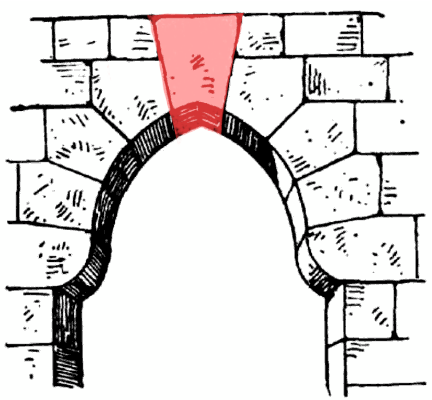
A keystone is that large, wedge-shaped central stone at the top of an arch. The idea is that if you remove that one piece, the whole thing collapses. If you've studied ecology or conservation, you're probably familiar with the term "keystone species"; a species that plays an integral role in sustaining an ecosystem. Likewise, a keystone commander has an integral role in a deck's strategy; without it, that deck won't be able to execute its gameplan.
Keystone commanders are often very powerful! I have an Arcades, the Strategist deck, all about attacking people with defender creatures.
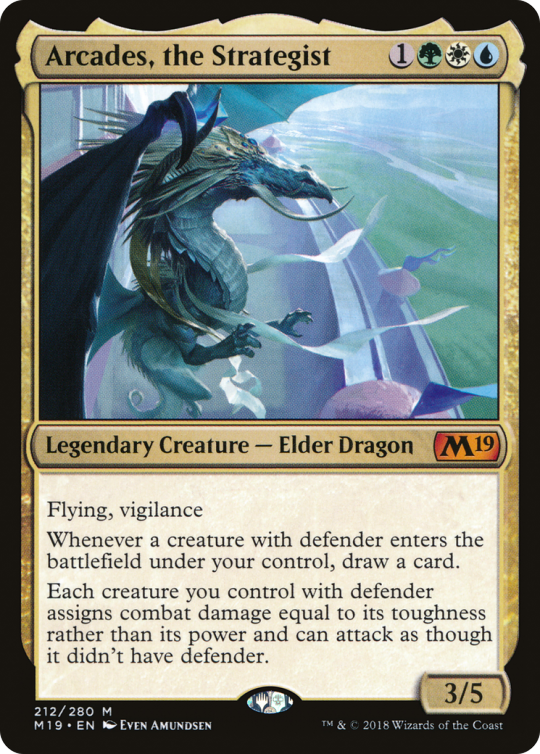
Arcades draws a bunch of cards and lets me attack with an ever-growing squad of large-toughness creatures like Shield Sphere, Wall of Shards, and The Pride of Hull Clan. Take Arcades off the battlefield, though, and I'm left with a bunch of creatures that can't attack. Savvy opponents will just kill and counter Arcades until I can't cast him anymore due to commander tax, or use something like Darksteel Mutation or Kenrith's Transformation to turn off his abilities. Powerful keystone commanders tend to make for these hot-and-cold strategies. Either your commander sticks and you win handily or it doesn't and your deck does next to nothing. That might not be a big deal if you've got a wide variety of decks, but if you've only got a handful and most of them fit this mold, the polarizing gameplay can get tiresome. It can happen pretty easily, too; keystone commanders are enticing to build around for less experienced deckbuilders, as their designs tend to provide a clear roadmap to how to build the deck. It doesn't take a veteran Commander player to look at Arcades and realize that the deck should be chock-full of defender creatures, but it does take experience to foresee the consequences of building a deck that's so reliant on its commander.
Well, what to do?
Sometimes the solution is swapping in a different Commander. One of my earliest Commander decks was a White/Blue flyers & blink deck with Isperia, Supreme Judge at the helm, but when Brago, King Eternal was printed a couple years later, I eagerly swapped him in over Isperia: his ability was on-theme, after all, and he was on the whole a much more powerful commander. I added Strionic Resonator, which can go infinite with Brago's ability and some mana rocks. As I kept playing with Brago, it became more and more obvious to me and my friends that whether I won or not depended entirely on whether I could keep Brago on the board long enough to start attacking with him. Classic keystone commander.

I cut value flying creatures for more counterspells to protect Brago and more mana rocks to ensure that I would be able to combo with Strionic Resonator. At one point it stopped being about flying creatures altogether—it was just about Brago. And after a decade of Brago's despotic ghostly grip on the deck, I decided to depose him. I replaced him with Yorion, Sky Nomad. Yorion still gives me good value even if an opponent kills it right away, its ability doesn't threaten an infinite combo, and the cards it works well with, creatures with enters effects and flicker spells like Ephemerate, also work well with each other in case Yorion's not on the battlefield.
Other commanders provide a little more flexibility in how you build around them, and the degree to which they are keystone commanders can vary. For instance, many players who build Feather, the Redeemed will build her as a Voltron deck.

Voltron Feather recurs spells like Titan's Strength and Psychotic Fury to grow Feather and crack in for big chunks of damage. As you might imagine, any deck looking to kill people with commander damage is going to have a keystone commander regardless of what it is. Voltron Feather, though hard to kill due to repeatable protection spells like Loran's Escape and Boon of Safety, like any keystone commander, will leave the deck in the lurch if she can't do her thing. Fortunately, there are lots of different directions you can take a Feather the Redeemed deck. My personal build mixes a creature token theme with a devotion-to-white subtheme and has lots of ways to recur small creatures. I use Feather primarily as a card draw engine—letting me reuse cantrips like Bandage and Crimson Wisps—and the deck as a whole is a lot more powerful when she's in play. But if she gets killed in the mid-to-late game, assuming I still control my other creatures, I can still get over the finish line without her. You can consider many commander deckbuilding decisions in this light. Not every card choice will make the difference between making your commander keystone or not, but they'll shift the needle a little bit. For example, putting background cards in the 99, such as Guild Artisan, will push that needle towards keystone-ness; or at least make your commander a juicier target for opponents' removal. Same goes for Lieutenant creatures like Skyhunter Strike Force.
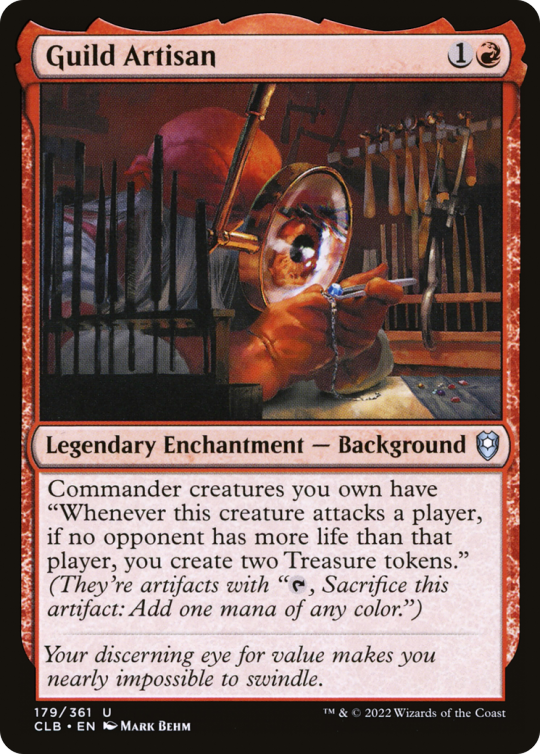
In general, you'll want to be careful about cards that require your commander to be on the battlefield to function at all; say Well of Lost Dreams in a Dragonlord Dromoka deck that doesn't have many ways to gain life outside of Dromoka's lifelink: it might be a decent way to draw cards, but it's also further incentivizing opponents to aim their removal spells at Dromoka. If you're looking to build a new commander deck and want to get away from keystone commanders, here are some criteria to look for:
Low mana-value commanders that you can play early for value, either by ramping you or drawing cards: Ruby, Daring Tracker; Azusa, Lost but Seeking; Jori En, Ruin Diver
Commanders with "enter" effects, like Gonti, Lord of Luxury; Sharuum the Hegemon; Prime Speaker Zegana
Commanders whose abilities have a lot of redundancies among their 99: Sythis, Harvest's Hand; Nekusar, the Mindrazer
Alternately, as you're building a new deck, ask yourself these questions:
Can my deck win without its commander on the battlefield?
If I were playing against this deck, how highly would I prioritize killing its commander?
Hopefully this will help you diversify your commander portfolio a little bit. I want to reiterate that having the occasional keystone commander isn't a bad thing, it's only that it's very easy to fall into the habit of exclusively building around powerful keystone commanders—and when your playgroup gets in the mindset that your commander always needs to die, well, they tend to kill your commander a lot.
26 notes
·
View notes
Text
So You've Got A Magic Rules Question

When I google "magic rules question" the first result I get is a page from Wizards of the Coast Customer Service.

It gives some links to "learn to play" resources, a rephrasing of "Reading the Card Explains the Card" (lol), a link to Gatherer (ew), the Comprehensive Rules Document (296 pages long), and then at the bottom says:

Which is kind of funny. "Yes, we're the company that makes this card game. No, we won't tell you how it works." Could Wizards of the Coast employ people to answer players' rules questions? Yes, yes they could. Will they? No, because there are already lots of people doing it online for free, and they're pretty damn good at it. But It would be a little gauche for WoTC to redirect people to these community-run services from their own Customer Service website, so instead they do that at the end of the "Judging at Regular" document, provided on the Wizards Play Network website.
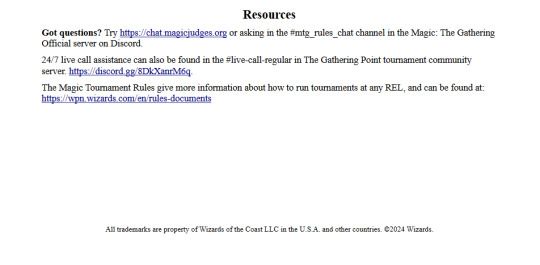
Shade at WoTC aside—these are actually helpful. I'm going to talk about these first two and a couple of other options.
AskAJudge - chat.magicjudges.org
This old-school internet chat room is an incredible resource. It was down for a while, but it's back now, and (usually) full of real Magic judges. Hop on in, give it a few seconds to make sure another question isn't currently being asked, then ask your question. You should get a response within a couple of minutes at most.
#mtg_rules_chat in the Magic: The Gathering Official Discord Server
In order to see the #mtg_rules_chat channel in this server, you'll first need to go to the #roles channel and respond with a thumbs up to the "Planeswalker Roles" post. You'll see rules answers being asked and answered here too. This channel is a little more public-facing than the AskAJudge chatroom, so there's a small chance you could get a response from a well-meaning but misinformed user—I recommend backreading the channel a little to get a sense of who the common question-answerers are. Don't worry: if an incorrect answer is given, there should be enough informed folks in the channel to correct it.
r/mtgrules and r/askajudge
I know Reddit isn't everyone's cup of tea, but hey, it works (mostly). And it's a lot easier to come back to and reference if you need to; maybe you've got a weird rules interaction in a Commander deck that people question you about on the regular—having a link to the relevant Reddit thread is a lot easier than trying to use Discord's search function to find that time you asked about that interaction a few months back.
Me!
My asks here on Tumblr are open! Unless I'm traveling, I should be able to get back to you within 24 hours. My rules knowledge isn't as deep as some of the judges who hang out in the AskAJudge chat or the #mtg_rules_chat discord channel; sometimes it will take me longer to find the correct answer. But if you're interested in not just how a particular rules interaction works but also why, this is a good place to ask, as I can go into greater detail with my responses.
Some advice for asking rules questions, regardless of where you do the asking:
Be polite. People are volunteering their time and expertise, and a quick "thank you" is appropriate, whether or not you receive the answer that you might have been hoping for.
Try to make your question as specific as possible, and use uniquely-identifiable card names. The question "How do mana doublers work with Boseiju?" will need some things clarified before a proper answer can be given: which Boseiju are we talking about—Boseiju, Who Shelters All or Boseiju, Who Endures? And as far as "mana doublers" go, are we talking about something like Heartbeat of Spring or something like Mana Reflection? These things can make a big difference!
Keep your questions grounded in the realm of possibility. That is, don't make up convoluted hypothetical situations that have next to no chance of coming up in a game of Magic just for the sake of stumping a judge. I'm not going to spend my time answering questions about Panglacial Wurm or Shelkin Brownie unless you're actually playing with or against them.
0 notes
Text
How to build Commander EDH in 2010
It's summer of 2010 and you're looking for a Magic format to play besides Standard and Extended, so you, like Magic players everywhere, are building your first Elder Dragon Highlander deck. The EDH Rules Committee has recently banned Channel, Staff of Domination and Tolarian Academy—Rofellos too, but only as a general.
Choosing your Commander General
While you *can* use a mono-color legendary creature as a general, most people build around a multicolored legendary creature so they can have access to a greater range of effects. For instance, Kiki-Jiki, Mirror Breaker looks like a cool creature to build around, but your friend plays a Zur the Enchanter deck and always gets Solitary Confinement out—Gambling for Capricious Efreet seems like a really unreliable way to deal with that enchantment. Instead, you'll probably choose one of the 3-color dragons from Planar Chaos, or a 3-color legendary creature from the Shards of Alara block as your general. There are some 5-color options, but most of them care about specific creature types (3 Sliver legends!) and while there aren't any 4-color legends, some people are okay with letting people use one of the five Nephilims as a general.
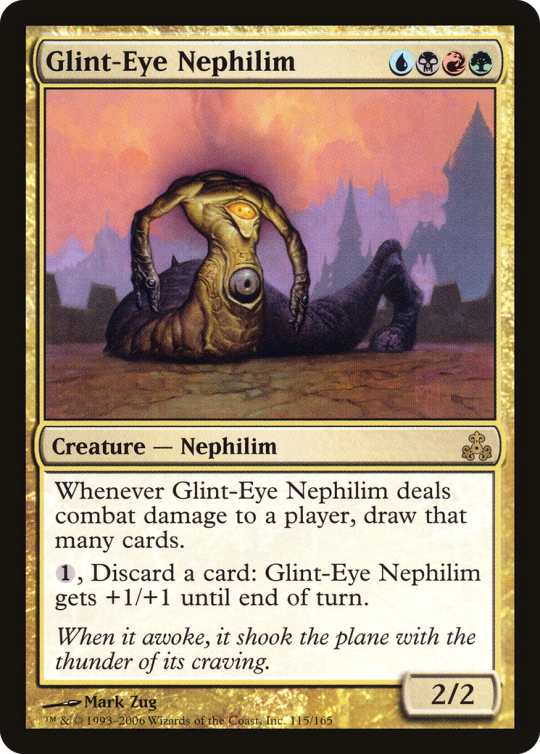
Building around your general is important, but make sure that your deck can also function without it! People like to play "tuck" effects that will put your general on the bottom of your library or shuffle it in: Oblation, Proteus Staff, and Hinder are all popular cards in the format.

How Many Lands? Curve Considerations?
Most EDH playgroups use the Partial Paris mulligan: that means you can keep some of the cards in your initial hand and put the others on the bottom, then draw back up to seven. You can repeat that as many times as you need to, but every time after the first you draw one fewer card. The Partial Paris mulligan means you can regularly get starting hands with 4–5 mana sources while only having around 30 lands in the deck in total. As far as the mana curve is concerned—most 60-card decks have a curve that, depending on the format, center on two or three mana. But in EDH, games go long and players have a LOT of life, so decks are jammed full of 6, 7 and 8-mana cards that have big effects; expect to see haymakers like Insurrection, Tooth and Nail, and Titanic Ultimatum. Consequently, most EDH decks have mana curves that center on 3 or 4 mana.
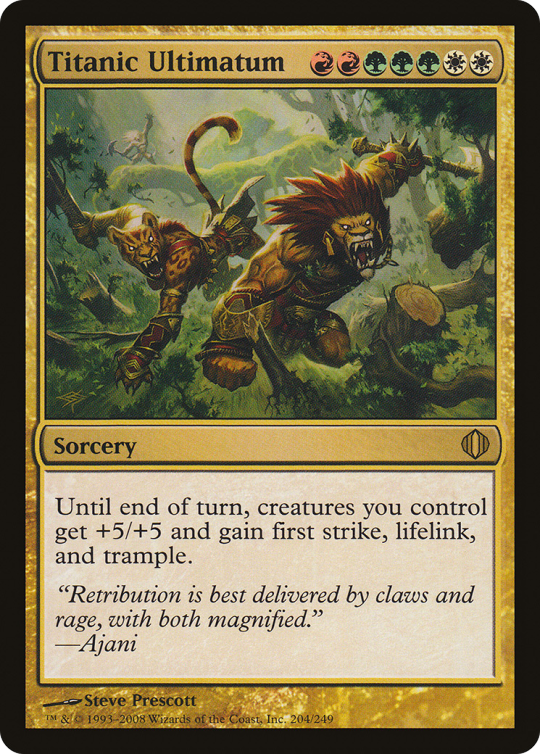
Color Fixing
If you're a long-time Magic player, you might have some original dual lands gathering dust in your closet somewhere—unless you play Legacy or Vintage you probably haven't had any use for them—grab those! If you don't have them, don't worry about it too much—in a 40-life format the shocklands are basically equivalent, and those only range from $10–30 whereas the original duals range approximately $30–80 each for their cheapest printings (there's no good reason to spend $80 on a white-bordered Volcanic Island when you can get a Steam Vents for $25). What's important is that you have at least some lands with multiple basic land types so that you can grab exactly what you need with fetchlands. The painlands also benefit from the higher life total (as does City of Brass). The Shadowmoor/Eventide filterlands are a great option and a little cheaper now that they've rotated out of Standard (same for Reflecting Pool). The original filterlands from Odyssey are slightly worse, but still worth playing. At the moment there are only the allied color pairs—but WoTC might finish the cycle sometime in the next few years (no way they'd wait 14 years to do that).
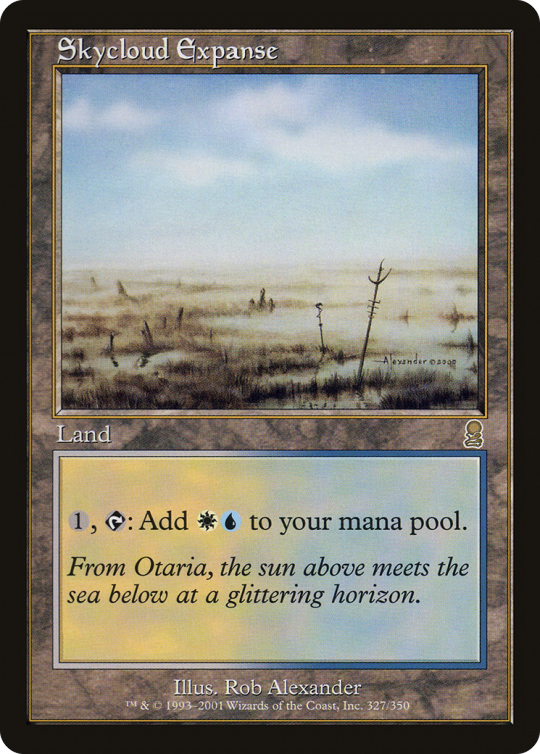
And in a multiplayer game with all these multicolored generals being played, Exotic Orchard is likely to be able to tap for all of your colors. (Keep in mind that since it's 2010 you won't be able to produce colors outside your general's color identity—so if you're playing a Lord Tresserhorn deck and you Clone your opponent's Jenara, Asura of War, for example, you still won't be able to make white mana with Exotic Orchard to activate the ability.) All that said, if you can't afford to spend $150 or more on your mana base, there are some budget options. The Ravnican bouncelands (aka Karoo lands) are great in EDH—they help fix your colors and essentially put an extra land in your hand. Terramorphic Expanse and its new sister Evolving Wilds can be used to find whichever basic land you need. For 3-color "shard" decks, there's the uncommon land cycle from Shards of Alara; the vivid lands from Lorwyn can also be used in a pinch, as can the refuge lands from Zendikar. If you're on a tight budget, you might find it easier to build a shard color combination than a wedge, since there are more allied-color lands than enemy-color lands.
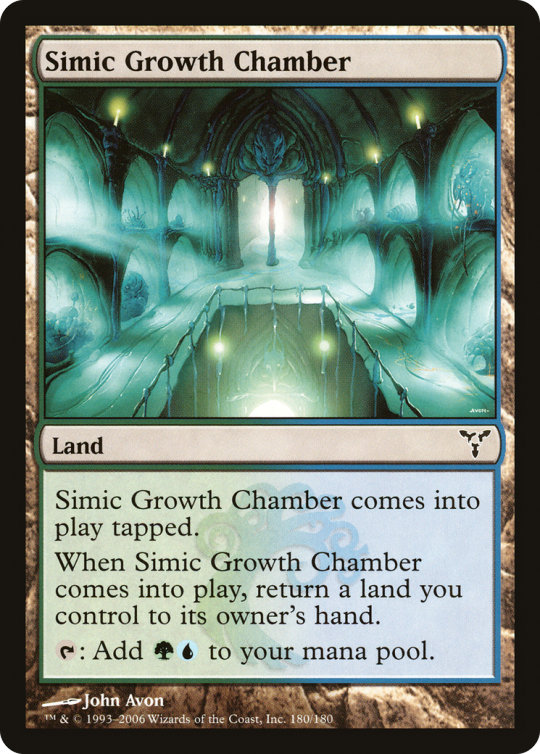
Ramp
When it comes to ramping your mana, if your general has green in its color identity, you're on easy street. Cards that destroy lands en-masse like Armageddon are considered taboo by most EDH playgroups, so cards that get extra lands into play are pretty surefire ways to ramp. Kodama's Reach (and its new non-arcane counterpart Cultivate), Explosive Vegetation and Skyshroud Claim are all gold-standard ramp cards. Land auras like Wild Growth, Fertile Ground and Overgrowth can be effective too, but they leave you vulnerable to Strip Mine and Avalanche Riders. If you don't have access to green, you're going to have to rely on mana rocks for ramp effects. Sol Ring is definitely the best option here; you can pick up a white-bordered one for around $5-10 (frankly, you should get ones for your green decks too). Its cousin Mana Crypt, on the other hand, is in the vicinity of $100 a pop—firmly outside most players' budgets. In between those extremes, we've got Grim Monolith, Mana Vault, and Gilded Lotus. Thran Dynamo, Worn Powerstone and Basalt Monolith are uncommons and each under $5.
Mana rocks can also help fix your colors. Coalition Relic is an all-star in decks with a lot of colors. The Signets, the Talismans (allied colors only), and Fellwar Stone can help shore up your mana base.
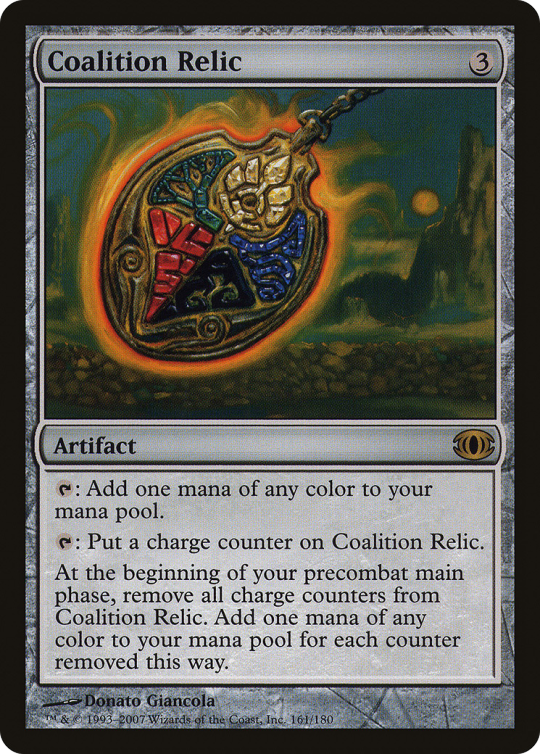
Not a mana rock—but still a form of colorless ramp—is Solemn Simulacrum (aka Sad Robot); an excellent early game play, the robot gets you an extra land when it enters and draws a card when it inevitably dies.
Card Draw
Drawing more than the standard one-card-per-turn is really important in EDH. Multiplayer games are battles of attrition, and you're going to want to make sure you always have gas in the tank. As you may know, some colors are better at this than others: blue is a natural at drawing cards, and black is no slouch either. Green has some ways to draw cards, but they (mostly) depend on having either a lot of creatures, one large creature, or having lots of large creatures.
White and red, however, have... not much to speak of. Mesa Enchantress and... Kor Spiritdancer, I guess, in white. Red's got... Browbeat? (Don't play Browbeat.) Card draw's just not in that part of the color pie; if your general doesn't have access to blue, black or green, you'll again have to turn to artifacts to fill in the cracks. Mind's Eye is a good way to draw a lot of cards, if you have the mana to spend. If your deck can make a lot of X/1 creatures, Skullclamp is there to turn them into new cards. If your creatures have flying, unblockable or double strike, Mask of Memory and Sword of Fire and Ice will help. If your deck gains lots of life, try Well of Lost Dreams.
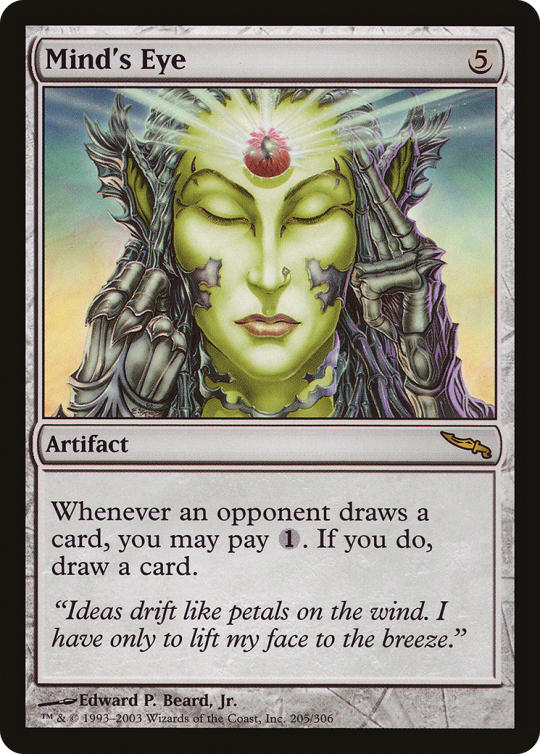
In truth, those artifacts aren't enough to fill the gaps. Unless you're looking for a real uphill deckbuilding challenge, it's best to avoid generals that don't have any blue, black or green in their color identity.
Removal and Board Wipes
Make sure to include a handful of removal spells and board wipes to keep your opponents in check. The goal is to have some response to their most powerful move—Nature's Claim their Beastmaster Ascension before they attack with 10 creatures—Swords to Plowshares their Rafiq that's attacking for 22—Counterspell their Time Stretch, etc.
Be on the lookout for removal spells that remove two or more things (artifacts and enchantments especially) at once: Return to Dust, Hull Breach, Decimate, Aura Shards, etc. Since most board wipes only destroy creatures, it's crucial to make sure opposing Rhystic Studies and Doubling Seasons don't stick around for the whole game. (Speaking of Rhystic Study—if you or your LGS have got any old boxes of Prophecy bulk, check for copies of this 3 CMC common. It might look underwhelming, but you'll be shocked at how many cards this can draw you in a four or five-person game!)

Speaking of board wipes—EDH games are long and full of ups and downs, and if you want a chance to make a comeback when you've fallen behind, you'll want a board wipe to even the playing field.
White, of course, has the greatest variety of board wipes: Wrath of God and Day of Judgment are clean and efficient; Hour of Reckoning, Mass Calcify, and Soulscour can be near-one-sided board wipes in the right decks; and Martial Coup can leave behind a batch of tokens. Austere Command is probably the strongest due to its modality, but don't overlook Rout either—casting a wrath at instant speed is likely to catch other players off-guard. Black is the next best color at wiping the board. Damnation costs a pretty penny right now, but is the most mana-efficient. Living Death sees a lot of play, and is a good reason to play graveyard-hate cards like Tormod's Crypt. Decree of Pain is an all-star; in addition to clearing the board you'll typically draw at least 10 cards off this one.
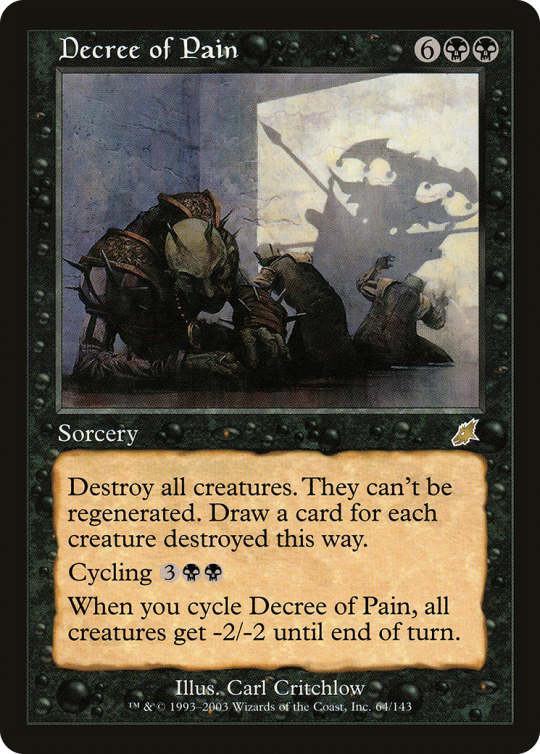
Red's mostly got board wipes that clear off small to mid-sized creatures. If you want to kill something big like an Inkwell Leviathan, you're gonna have to invest a ton of mana into an Earthquake or Starstorm. Although we did just get Chain Reaction in Rise of the Eldrazi, which I have high hopes for. Keep an eye out for that one!
The closest Blue's got to board wipes are mass-bounce cards like Evacuation, Inundate and Kederekt Leviathan. Expect to see more of these played at instant speed now that blue decks have a second Vedalken Orrery with the newly-printed Leyline of Anticipation. Green doesn't really have board wipes. It's got some Windstorm effects for clearing away flying creatures, but that's it. How many removal spells and board wipes should you have in a deck? Well, that can vary depending on your strategy, but I'd say that on average decks are playing 4 of each.
Threats and Win-Conditions
So far we've covered color-fixing, ramp, card draw, removal and board wipes: all things needed to get your deck off the ground and preventing your opponents from getting too far ahead. But now we need some haymakers to actually win the game! You have a lot of flexibility here; go raid your trade binder and pull out some big splashy creatures! Kaervek the Merciless, Hamletback Goliath, Stormtide Leviathan, Godsire! Keep an eye out especially for large creatures that have some effect when they enter the battlefield or die; the new Titan cycle from M11, for example, or something like Magister Sphinx. They get you value even if one of your opponents wipes the board the turn after you cast them. Likewise, giving your creatures haste is a big plus—Lightning Greaves is a must-have card for EDH.
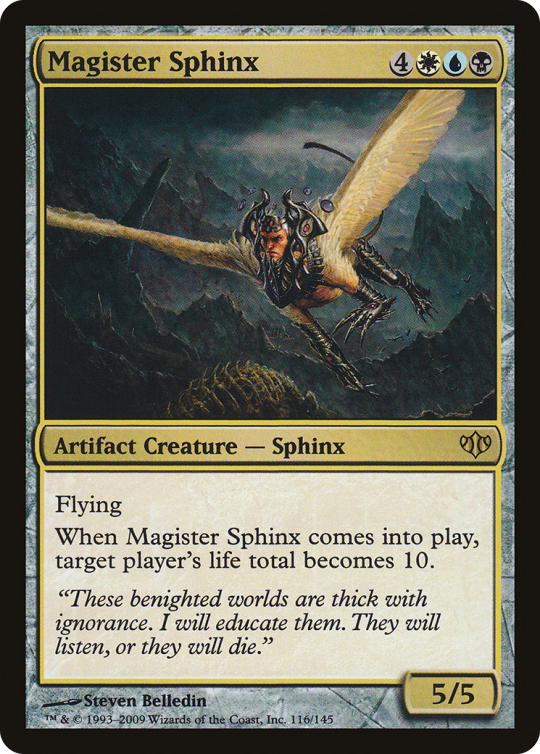
Large creatures are great, but you'll want a big sorcery or two to really bring the hammer down and finish the game. I've mentioned some of these already: Time Stretch, Insurrection, Tooth and Nail, etc. That, or have some sort of infinite combo that you can assemble that wins you the game. Kiki-Jiki + Pestermite is an obvious example, but there are lots of others that are too inefficient to see play in Extended or Legacy that you can use in EDH.
Thanks for reading
That's all from me! I hope this helps you have a fun time playing Elder Dragon Highlander! The difference in scale can take some getting used to, but once you do, you can get a ton of mileage out of your deck; since EDH is non-rotating and only a handful of cards from each new set get played in the format, you can comfortably go a year without making any upgrades to a deck and still have it be in fighting shape. The format moves very slowly. Hopefully this means that the advice in this guide, from 2010, will be applicable years and years from now! [DISCLAIMER: most of it isn't]
1 note
·
View note
Text
10 Downshifts That Wouldn't Shake up Artisan Commander
Wizards of the Coast often reprints cards at lower rarities in supplemental products -- and when a previously rare card gets downshifted to uncommon or common, it has the potential to shake up the Artisan format. For instance, last summer Commander Masters introduced two board wipes to the format: Kirtar's Wrath and Extinguish All Hope, as well as a number of other powerful cards. There are many, many rares from Magic's history that would make for interesting and powerful additions to the format; I've gone and hand-picked a few that wouldn't. Here are ten cards that, if introduced to Artisan Commander, would have all the impact of a wet tissue:
10) Ransom Note

It used to be that if a new card was printed in multiple of the Commander Precons for a set, it would be uncommon or common. They've stopped doing that for some reason, so Surveil Note, the first cut in everyone's Murder at Karlov Manor pre-con upgrade guides, is a rare, and thus not something us Artisan players can even consider adding to our decks. If we wanted to consider it. I'd say we'd think about considering considering it, but I can't make any promises.
9) Braids, Cabal Minion

Braids, Cabal Minion would maybe kinda shake things up at uncommon if not for the fact that she were already on the Commander banlist. She would, at the very least, show up in our Scryfall searches and stare us down with her creepy, creepy face.
8) Rakalite

Rakalite, one of the worst Magic cards ever printed, would not make even the slightest dent in Artisan Commander. Not even Imoti lists would consider playing it, and that's really its best use case-- oh, wait, actually, Rakalite was originally printed as an uncommon. My bad, y'all. Uhh... yeah, go nuts with this one I guess.
7) Exiled Doomsayer

Yes, someone could conceivably have a morph/disguise-themed Artisan Commander deck against which a downshifted Exiled Doomsayer would be a silver bullet. I just haven't seen any. I mean gosh, Manglehorn is Artisan legal, that's a great card, and would be relevant against lots of Artisan decks. When was the last time I saw a Manglehorn in Artisan? Never, that's when. The point is, Exiled Doomsayer would be an utterly pointless downshift and I feel like I've upset myself just by writing about it. Good riddance.
6) Rhythmic Water Vortex

Ok, I know ordinarily we're chomping at the bit to play with some Global Series Jiang Yanggu and Mu Yanling cards, but I'll be honest, even if Rhythmic Water Vortex were downshifted, Mu Yanling herself is a mythic rare, so in Artisan the ol' RWV would be strictly worse than Essence Fracture. And Step Through. And Horses of the Bruinen. And Quicksilver Geyser. And Whiplash Trap. And Into the Void. And This Town Ain't Big Enough. And Undo. And Run Away Together. And Aether Gale.
5) Providence

As a rule, I try not to dismiss the potential of cards that generate an effect for free, but I make an exception for this one.
4) Halo Hunter

I can't say that there aren't any Angel creatures played in Artisan. Thraben Watcher is quite good, and I've got Herald of the Host and a couple Inspiring Overseers in my decks. But all told, that's pretty slim pickings, and I think people will continue to just use the Chupacabra and good ol' Shrieky.
3) Deicide

Gods are even more infrequent than Angels in Artisan (in that there aren't any), and it's a singleton format regardless. So that leaves you with a 2 mana instant that exiles an enchantment. Now, I don't want to erase its odds entirely, but it's not looking good.
2) Avalanche Tusker

It's not Avalanche Tusker's high colored mana requirement, underwhelming stat line or mediocre ability that would keep it out of Artisan commander if it got downshifted: its color identity would. See, we don't yet have a legendary creature at common or uncommon that has green, red and blue in its color identity-- or for any of the wedge color trios, for that matter.
1) Fated Intervention

There's almost an art to being a truly useless Magic card. Come with a drawback too severe, like Steel Golem, and you become prime donation fodder in decks like Zedruu and Jon Irenicus. Fated Intervention is a masterclass is mediocrity. I mean, what are you going to do with this card? Trigger Elemental Bond twice? Populate the tokens? Trigger Arwen's ability with the scry? Forego the scrying to make surprise blockers? Play it in Centaur typal? Even in Artisan, this will always be the 120th card. May it clog up bulk rare boxes the world over until the end of time.
That's my list!
Thanks for reading-- check back next week for "Commander Can Be Balanced - And We'd Only Need to Ban These 1,455 Cards"
3 notes
·
View notes
Text
Man, I don't know how you're supposed to wake up and go to work tomorrow if you're an employee at WotC. How do you reconcile one of your most successful years on record with such severe layoffs. Just before the holidays even. What the fuck.
6K notes
·
View notes
Text

Tales from the Mana Crypt #82 - Ambition's Costs
What's the cost of free?
268 notes
·
View notes
Text
Lost Caverns of Ixalan Artisan Set Review: Part 1
Which common and uncommon cards in Lost Caverns of Ixalan might make their way into your Artisan Commander decks? Part 1 will cover the monocolor cards, and Part 2 will cover the multicolor and artifact cards. Let's take a look:
White
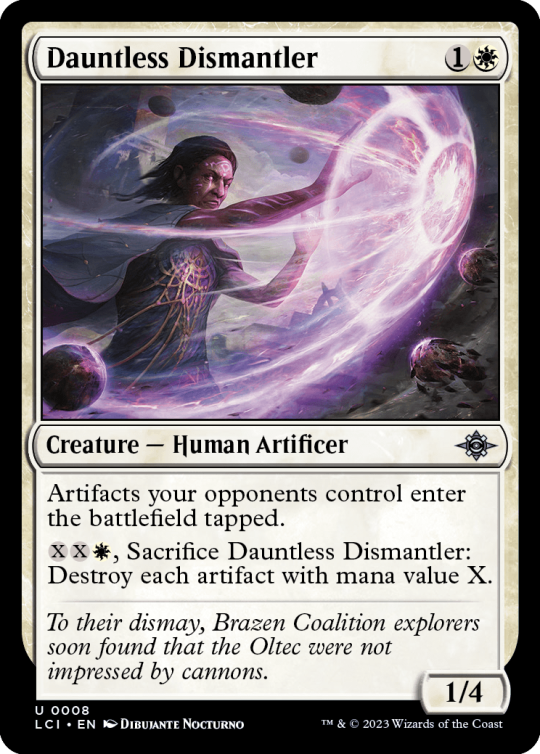
Manglehorn is an existing card but doesn't see much play in Artisan. Making your opponents' artifacts enter tapped has a larger impact in regular EDH where it hits mana rocks like Grim Monolith and Mana Vault, not to mention slowing down big treasure makers like Dockside Extortionist and Smothering Tithe. In all, I don't expect to see too much of Dauntless Dismantler in Artisan games.
Blue
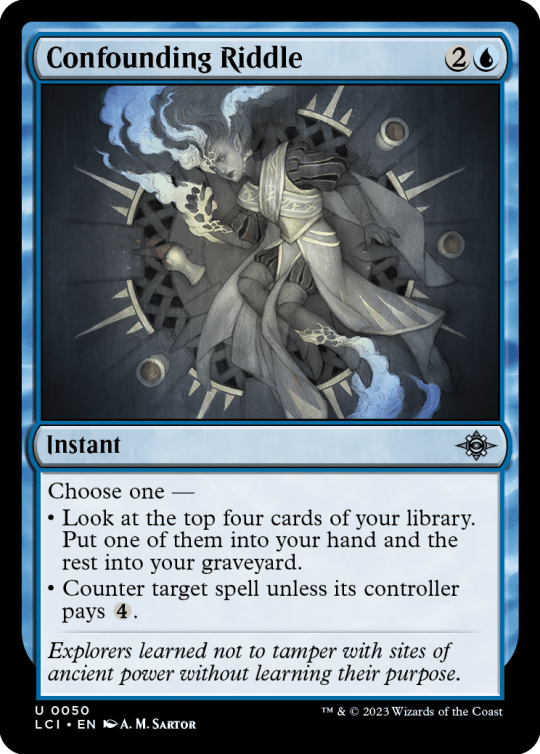
An upgrade over Supreme Will, which sees some play. Putting the extra cards into the graveyard instead of the bottom of the library is relevant for spells decks with payoffs that count the number of instants/sorceries in the graveyard: Crackling Drake, Gandalf's Sanction, Rise from the Tides, etc.
Black
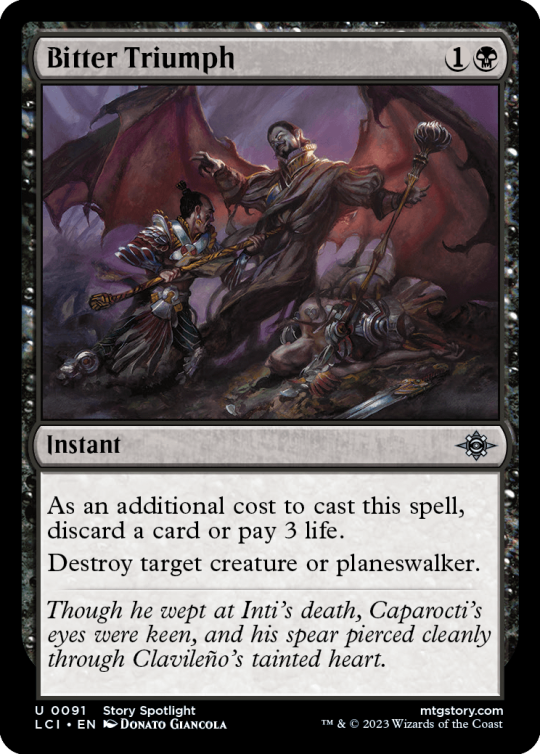
The closest comparison is to Infernal Grasp. Bitter Triumph can hit planeswalkers, but there aren't very many of those in Artisan. The larger difference is the flexibility in the additional cost: when you don't want to pay life you can discard a card instead and vice versa. Some decks, such as reanimator, want discard outlets anyway. I expect to see Bitter Triumph at similar rates as Infernal Grasp and Go For the Throat.
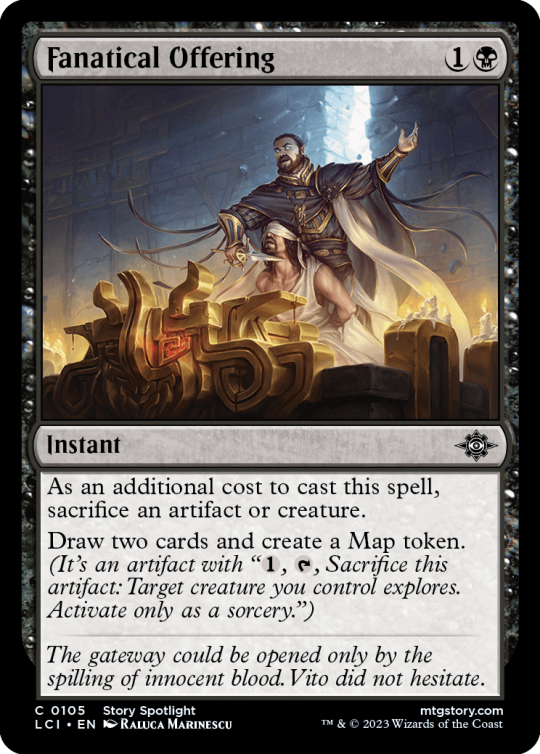
A Deadly Dispute that creates a Map token instead of a Treasure. A lot of decks that run Deadly Dispute will want this card too: Juri, Gut, Thalisse, etc.
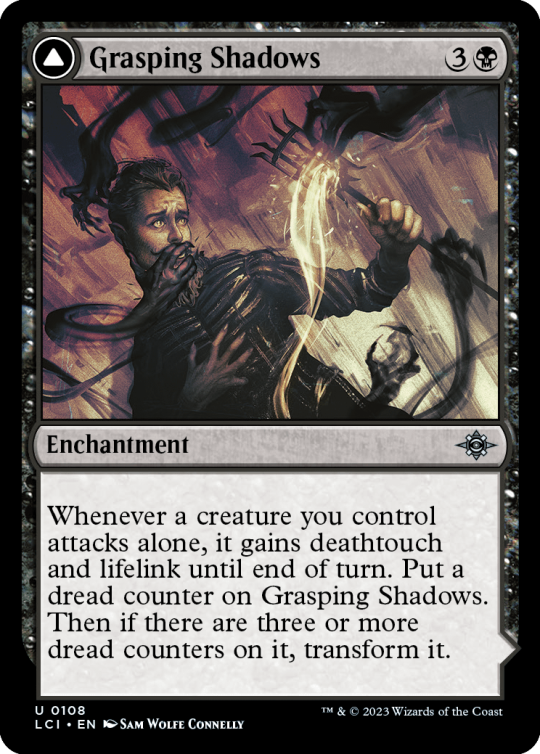
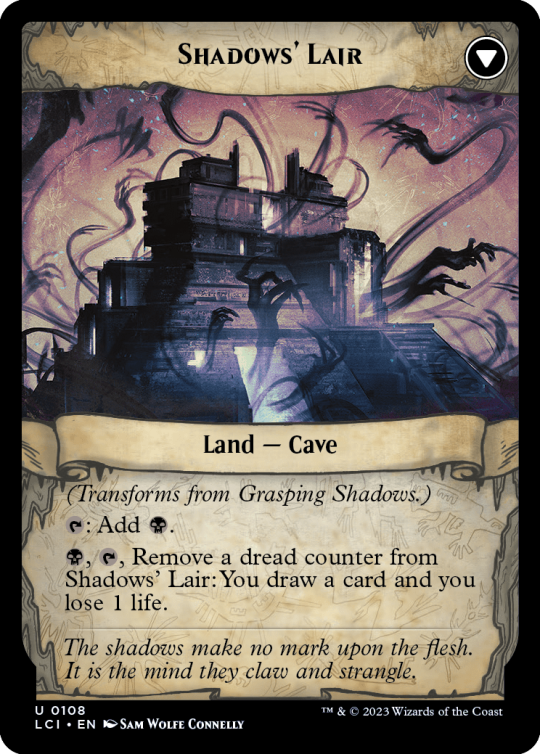
This card's pretty interesting. It has shades of Deadly Wanderings to it, except that it only needs you to attack with a single creature instead of controlling only one creature, which is a pretty significant difference. Obviously, you'll want to put this in a deck that can attack with a single large creature. This card's not worth running over a card like Ancient Craving if you're not going to profit off the front side. I'm thinking something like Yargle or Rael Rilsa.
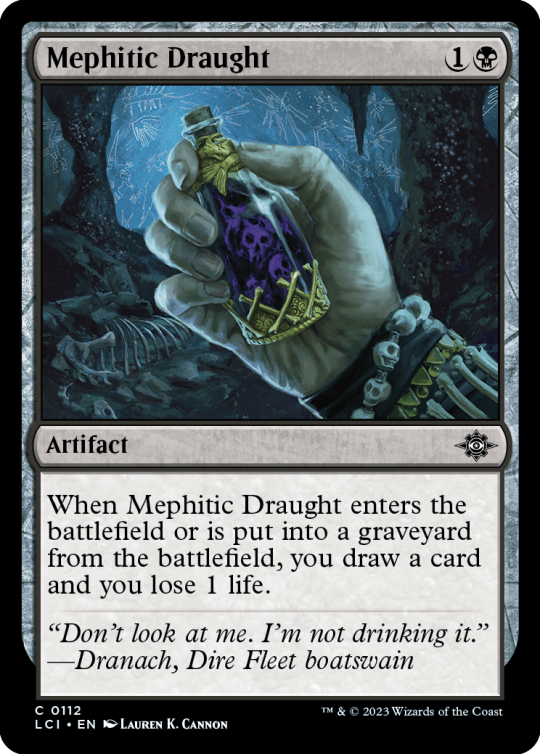
Ichor Wellspring is played in lots of decks that like to sacrifice artifacts. Mephitic Draught is essentially a second copy for black decks.
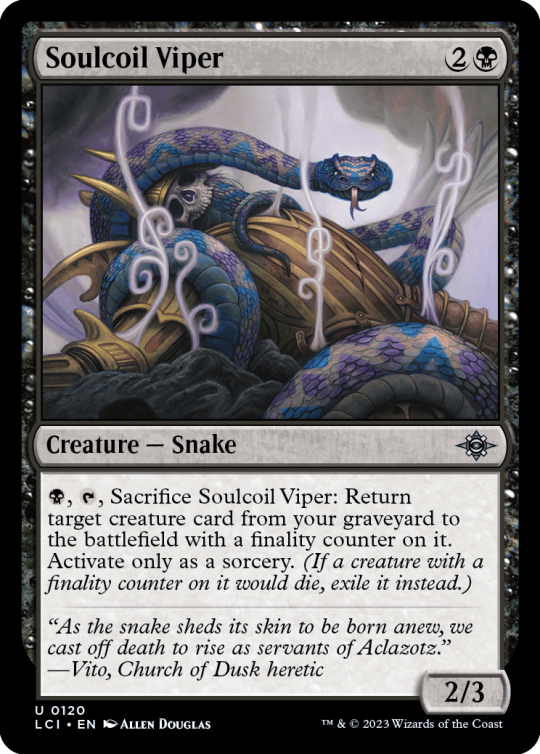
This card's not far from Doomed Necromancer, which has always struck me as a rare that's ripe for a downshift. The finality counter and sorcery speed are a bit of a bummer, but Soulcoil Viper is something to consider when building Barrowin of Clan Undurr, or if/when they downshift Alesha, who Smiles at Death (fingers crossed)
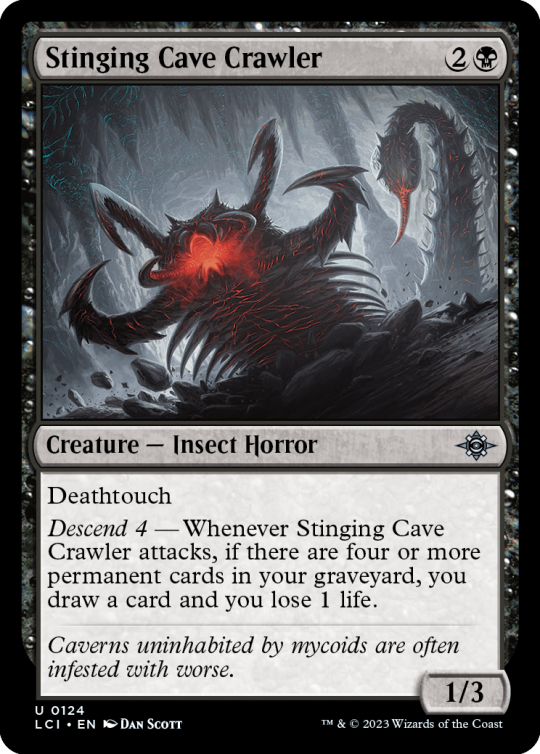
Any self-mill deck that can easily get four or more permanent cards into its graveyard will like this little guy. Deathtouch means you will often be able to find someone to attack who doesn't want to block, and in a pinch you can leave it back to dissuade a big creature from attacking you.
Red
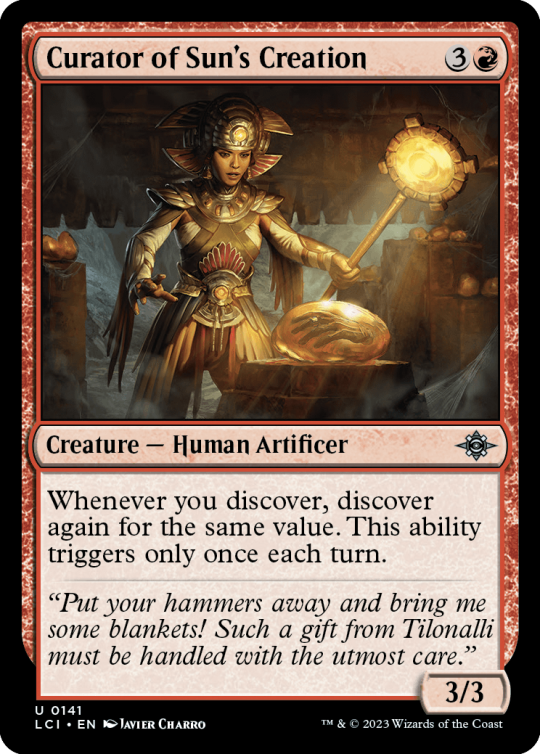
I'll talk about Caparocti Sunborn when I get to the multicolor cards, but yeah, if you plan on discovering a lot, this card seems deece.
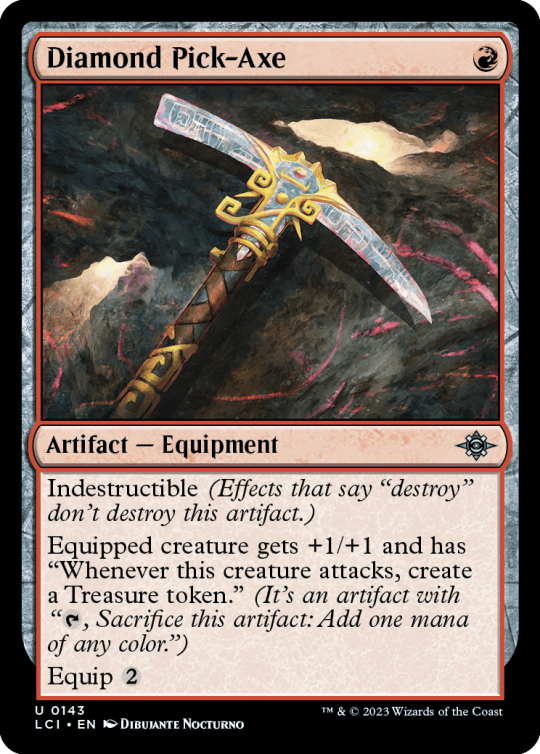
It's a red Prying Blade except: A) it's indestructible, B) it gives an extra point of toughness, and C) gives you the treasure on attack, not when it hits an opponent. Overall that's pretty good.
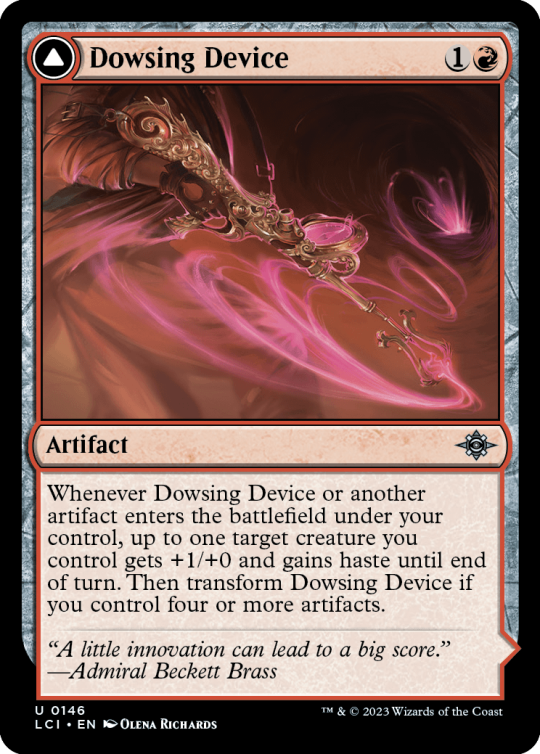
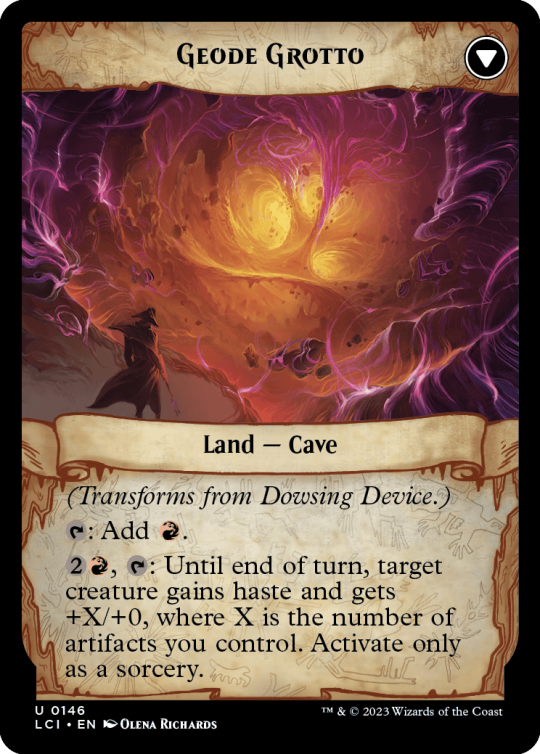
This card looks excellent in an artifact-heavy deck. It can provide creatures haste in a pinch on its front side, but flipping it shouldn't be very hard, in which case it turns into a land with a very powerful activated ability. Even if you never use that second ability, it's still a card that ramps you.
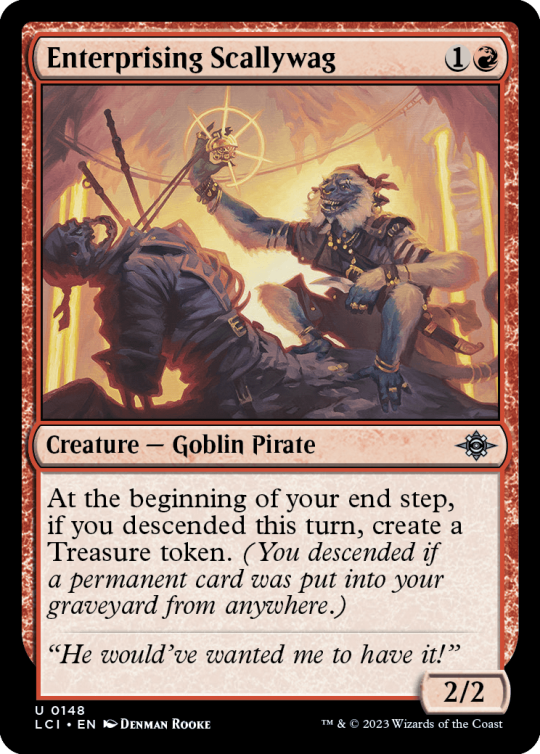
It's going to be fairly difficult to trigger descend every turn, even in decks that go out of their way to sacrifice stuff. Keep in mind that tokens are not cards, so sacrificing treasures or Eldrazi Spawn tokens or whatever won't trigger this. That said, getting just two or three treasures out of a two-mana creature is pretty good, and it has two relevant creature types.
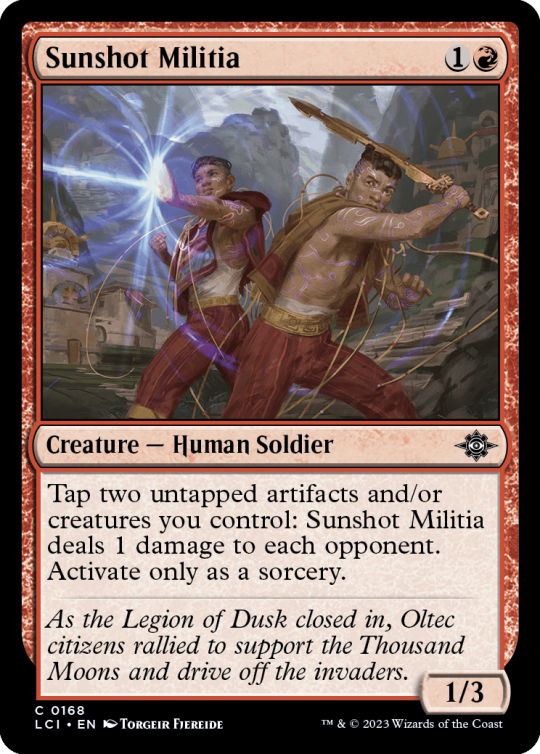
Sunshot Militia is yet another creature that goes infinite with Malcolm, Keen-Eyed Navigator and a way to turn it into a pirate. Aside from that, it's still a card with a ton of potential. It works great with Curiosity effects, for one thing. But any deck that has lots of stuff hanging around, be it treasure tokens, food tokens, equipment, or dispensable creature tokens could use Sunshot Militia to deal good chunks of damage at low cost.
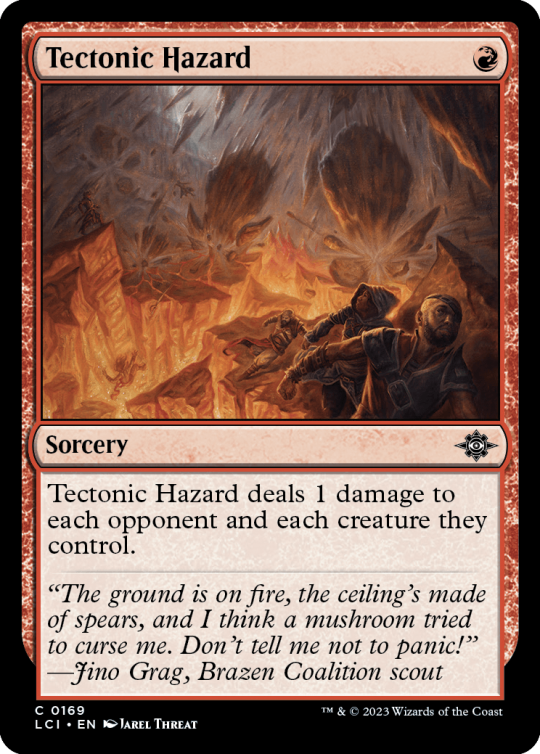
Great for my Syr Carah deck.
Green
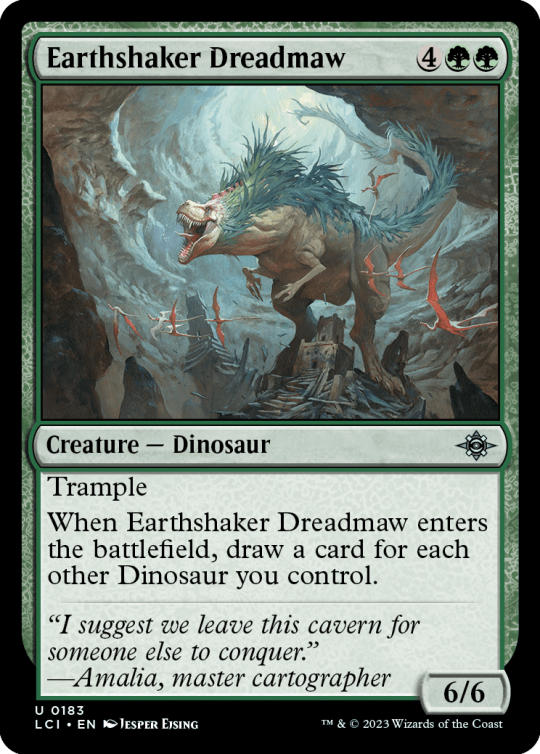
Ok so a lot of these dinosaur payoffs I'm skipping over because the red-green signpost dinosaur legendary doesn't look very compelling as a commander- I'll get to it in Part 2- but Earthshaker Dreadmaw is a house.
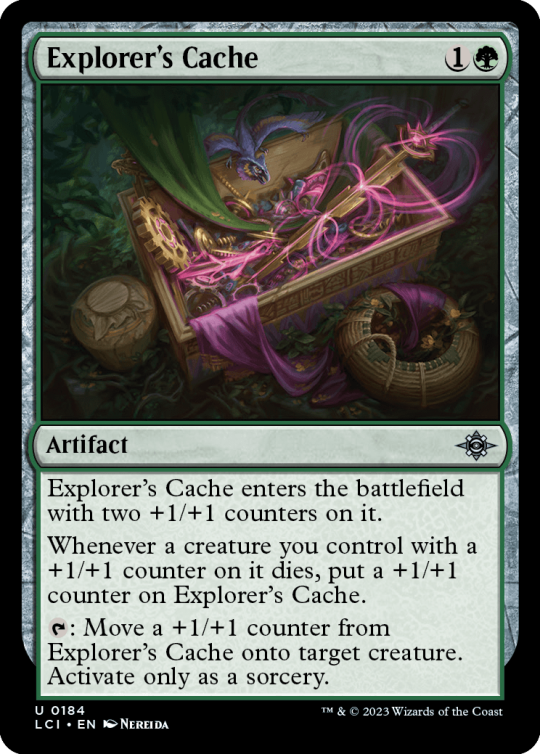
This card reminds me of Afiya Grove, which not only is a rare but also on the reserved list. And Explorer's Cache is... better? It enters with one fewer counters on it, but gives you a lot more control over when you dole out the counter (a big mark against Afiya Grove is that you have to give the +1/+1 counter to an opponent's creature if you don't control any creatures), and of course, it recoups counters if your creatures die. I'd put Explorer's Cache into any deck that has a lot of +1/+1 counter synergies and proliferate. It also works very well with Kami of Whispered Hopes.

Poison Dart Frog looks like a decent mana dork/rattlesnake card. Pretty nice that it can block a creature with flying, then tap to help pay for its own deathtouch ability. That said, I wouldn't run a two-drop mana dork if I don't need the mana fixing; if I just want to ramp, I'd go with Llanowar Elves/Elvish Mystic/Fyndhorn Elves instead.
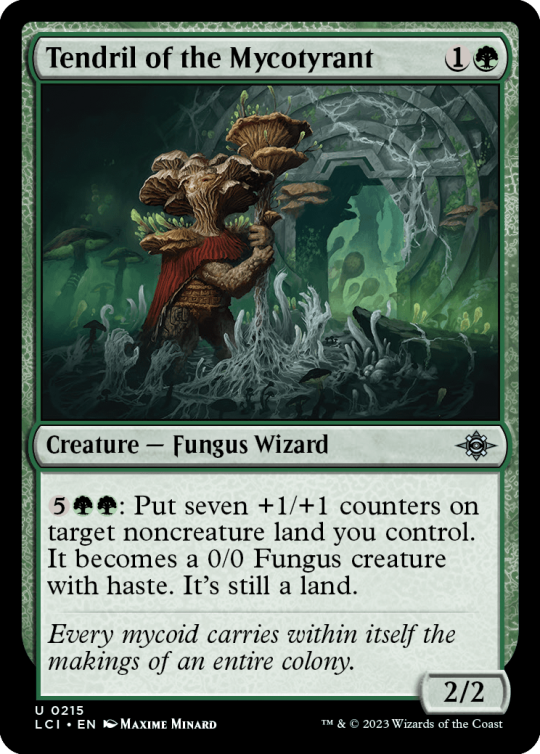
This is the biggest, baddest green mana sink we've gotten in Artisan. Previously the best was probably Centaur Glade. Sachi decks will be able to use this, and maybe(?) Rishkar and/or Tatyova decks. If you're making infinite mana with something like Devoted Druid + Vizier of Remedies, I'd recommend putting that mana into something like Goblin Cannon for the win; as cool as turning all your lands into 7/7s is, you have a limited supply of them, and they don't have trample-- you don't want to pass the turn only to have them all destroyed by a Slaughter the Strong or Kirtar's Wrath.
Alright, that's all the monocolor cards! See Part 2 for multicolor and artifact cards!
2 notes
·
View notes
Text
Lost Caverns of Ixalan Artisan Set Review: Part 2
Find Part 1 here! Part 2 covers multicolor and artifact cards.
Multicolor
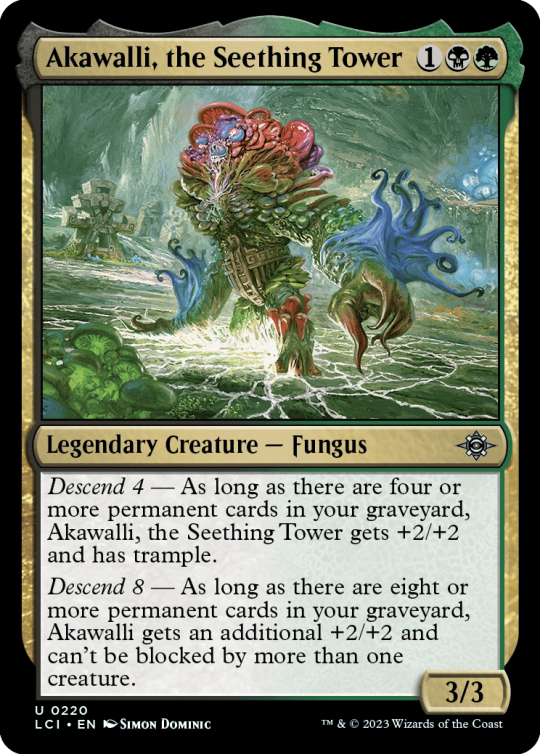
Akawalli takes the classic black-green self-mill strategy we see with commanders like Kagha and Uurg and adds a voltron twist. Expect to see Akwalli in creature-heavy decks with cards that can buff it equal to the number of creatures in the graveyard. Giving it menace once you're at Descend 8 makes it unblockable, so Criminal Past and Moodmark Painter are must-includes.
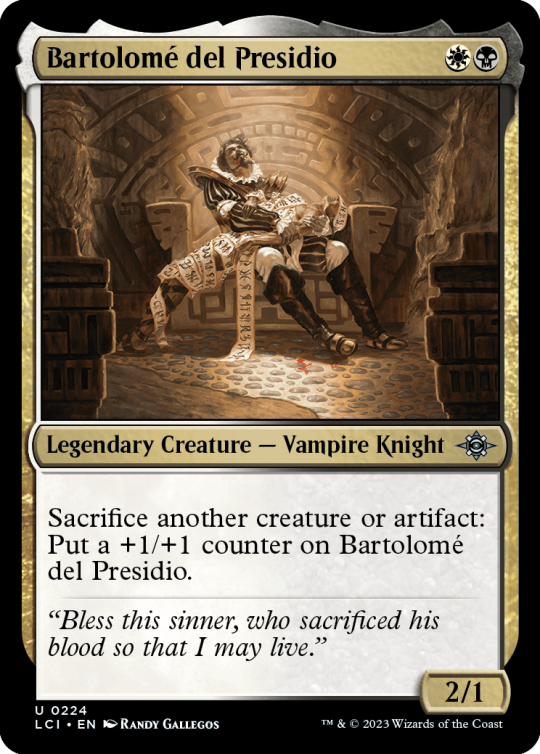
Bartolomé is a very powerful Magic card. They don't often give us free sacrifice outlets anymore. For white-black decks that want sac outlets, I expect this to be played alongside Viscera Seer, Fanatical Devotion, and Carrion Feeder.
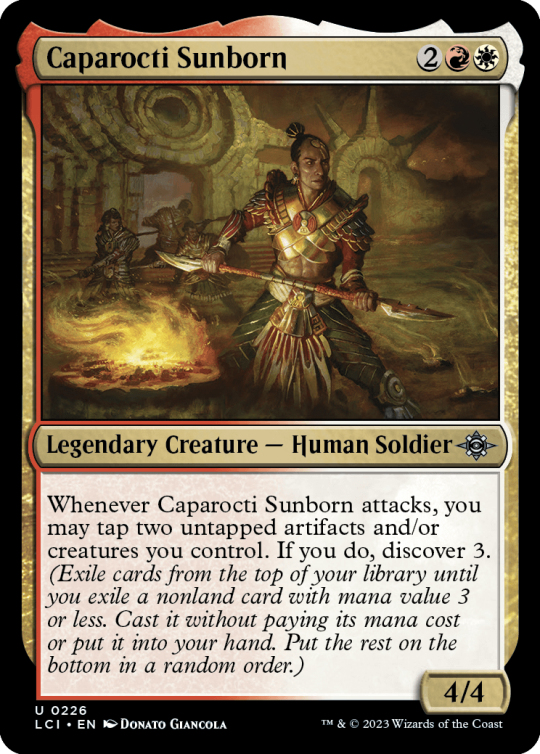
Caparocti Sunborn looks like a sweet value card either in the 99 or in the command zone. It's large enough to attack someone and survive (usually) in the mid game; as the game goes longer you'll want to augment him with some sort of equipment (which you can tap to pay for his ability) so that you can continue attacking. I'll be adding Caparocti to my Commander Liara Portyr deck.
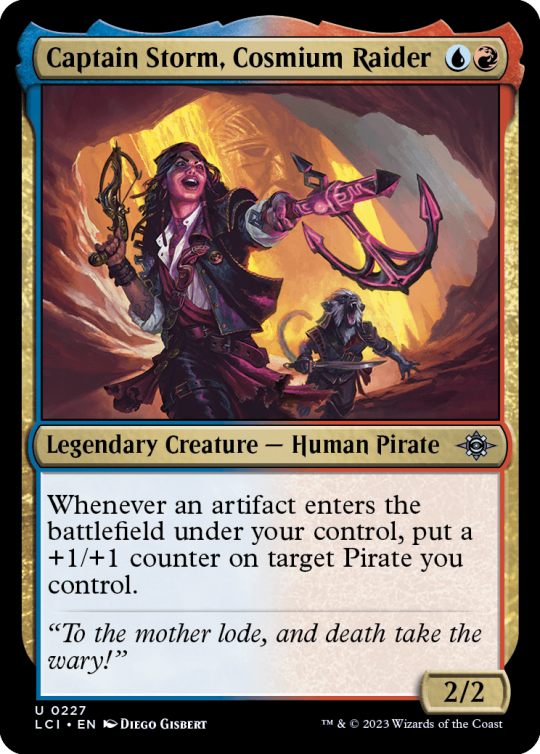
There have been a bevy of pirate creatures that make treasure tokens or care about artifacts: Malcolm, Keen-Eyed Navigator; Dargo, the Shipwrecker; Fathom Fleet Swordjack, etc., and there are some pirates that carry +1/+1 counters very well, provided you can get up to 10 permanents, which isn't hard with all the treasure: Slippery Scoundrel, Storm Fleet Sprinter, and Storm Fleet Swashbuckler.
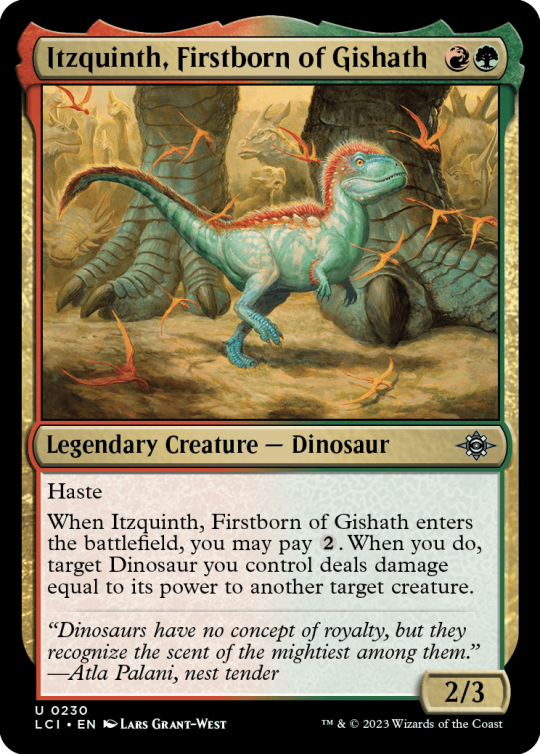
As I said in Part 1, I find this card a little underwhelming as a commander. It's an excellent card in limited, don't get me wrong, but it doesn't support a dinosaur deck in the way you'd want a commander to. From a purely mechanical perspective, I'd prefer to have something like Ruby or Tuya leading my red-green dino deck. Itzquinth is pretty cute, though.
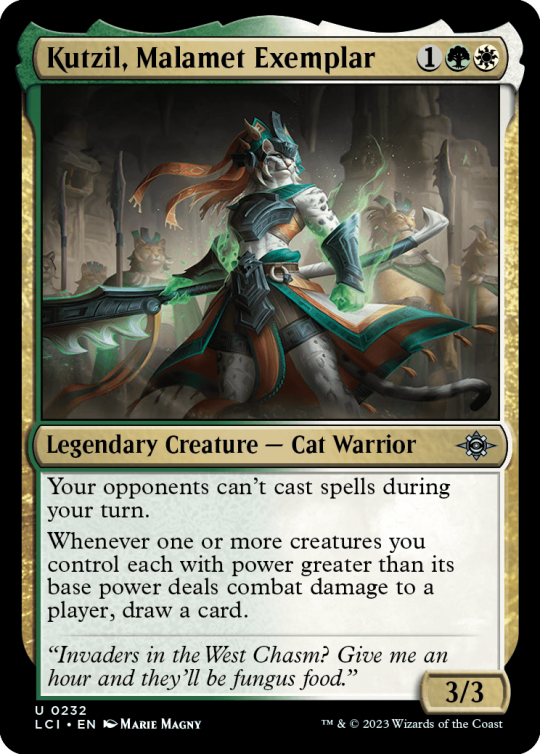
This card's very good. This card is I'm-thinking-about-putting-it-into-my-cEDH-deck good. It's part Grand Abolisher, part Toski. It'll find a place in nearly any green-white Artisan deck, but especially Hamza. It protects your board as you Overrun or cast a big Hunter's Insight! It draws you cards! *chef's kiss*


Alas, not every color pair received a legendary creature for its signpost uncommon. This card is very slow, and making it work is going to be a tall order, but gosh darn it, I'm going to try. I really want to build a golem assembly line.
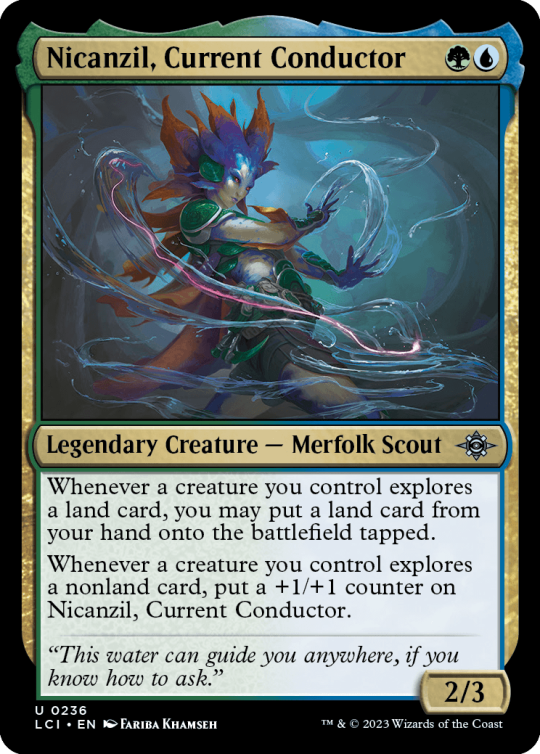
At first blush Nicanzil looks sweet, but if you go look at all the common/uncommon creatures that explore, it gets a lot less exciting; they're all french vanilla beaters like Merfolk Branchwalker. The other explore payoffs, Wildgrowth Walker, and the new Twists and Turns, don't seem strong enough to make up for it.
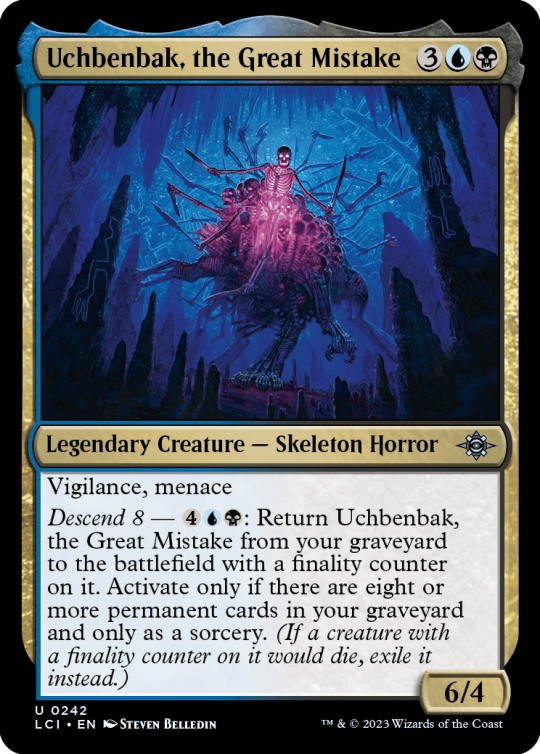
Uchenbak looks pretty unwieldy. A 5-mana 6/4 vigilance menace commander makes for a serviceable (not good, but serviceable) beater, and you could try to lean into that with a quasi-voltron build with stuff like Strider Harness (getting to seven power is a big deal with voltron commanders). Getting eight permanent cards into your graveyard is no easy feat, however, and in return for doing so you get to recast your commander for only one mana cheaper than it would be from the commander tax.
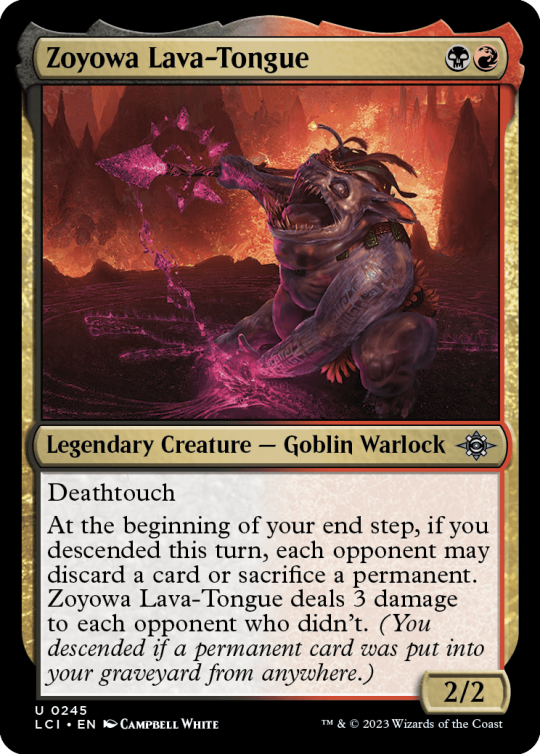
I don't think Zoyowa is that great either. It having deathtouch is nice, but its second ability requires you to descend, which again, seems like a thing that's difficult to do every turn. Furthermore, giving your opponent the choice between discarding a card, sacrificing a permanent, or taking 3 damage means that they get to choose the least impactful thing- they'll hold onto their extra lands to discard, they'll sacrifice their treasure tokens, they'll take 3 when they have a high life total, etc. If Zoyowa is a card that you're excited about, I implore you to try Loyal Subordinate if you haven't already.
Artifacts
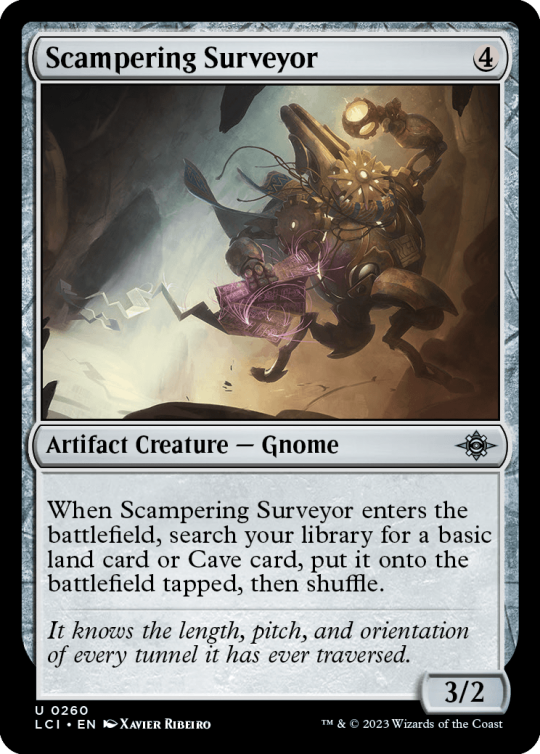
Some people have been comparing this to Solemn Simulacrum and frankly that comparison isn't flattering. If Solemn were downshifted (which I believe it should be) I would put it into some of my non-green Artisan decks, but not all of them. This card is significantly worse. Consider it this way: what percentage of Solemn's total value is constituted by that card draw? I'd argue that it's somewhere between 35-40%. How much of that is recouped by the extra point of power? Maybe... 5%, if we're being generous. (In 20-life formats, and particularly Limited, the difference between a 2/2 and a 3/2 is a lot bigger than in 40-life formats)
That said, Scampering Surveyor might find a home in some blink deck like Oji that really likes having a creature with that etb ability, or a Cave deck- at least, once we have a 5-color commander and probably another set's worth of Cave support.
---------------------------------
And that's all the cards I'm gonna talk about! Looking over them, the selection here feels a lot thinner than it was for Wilds of Eldraine. I'm not sure if that's because there are fewer interesting cards in the set for Artisan, or if it's because my bar for including them in the set review has risen. Time will tell.
2 notes
·
View notes
Text
Earlier this month, on October 6, Wizards of the Coast put out a short statement via their WPN site.
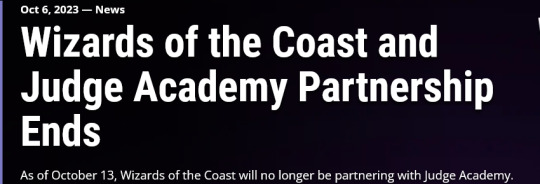
I didn't hear about it until a few days later. A friend of mine from high school, who plays Magic casually, mentioned it, and I was incredulous; surely I'd have heard about something like this. Normally I'd get a notification on Facebook from the judge group I'm in when news of this sort breaks- but the ever-mercurial social media algorithm proved unreliable, and thus the only notifications I've been getting the past month have been about Facebook Marketplace, a feature I've never used and have no intention of using. But I digress.

If you don't know what Judge Academy is, it's the company that's been, essentially, in charge of Magic's judge program for the past 4 years. It handled judge training and certification, approved judge conferences, and worked with WoTC to deliver judges their promo cards, among other things. I became a level 1 judge just a few months before its inception, so my experience as a judge, thin and fragmented as it's been from the pandemic, has coincided with Judge Academy rather neatly.

As I've been working towards level 2 recently, I've noticed some of the cracks in JA. The website is painfully slow. The content of the modules is sometimes lacking. When I emailed them in late August to give critical feedback on one of the modules, I never received a response. A few weeks back I overheard another judge saying that none of the conference requests were been approved- and in a system where attending conferences are the only way to receive judge promos, that surely was ruffling some feathers.

So the fact that Wizards has shown JA the door is maybe not so shocking in hindsight. (I believe that Tim Shields and the folks who work for JA are capable and passionate-- I want to be clear that I don't think that its shortcomings were the result of any personal failings-- the task of managing the judge program on a global scale through a pandemic on a shoestring budget was essentially an impossible one.)
But the way Wizards delivered this news? In six sentences? With exactly zero plan in place for what will replace Judge Academy? It's neglectful to the point of abuse. "Experienced Magic judges are the lifeblood of high-level Magic" -- we know. Are you going to help us in any way? "We look forward to the future of Magic judging" -- what kind of future *is* that, WoTC? One where you ignore us and expect us to just make your game and your tournaments continue to function for you? What is your plan!!??
Anyway, the same day of the announcement from WoTC, a group of five judges announced the formation of Judge Foundry, a non-profit association for the U.S. and Canada that can take up the mantle of the judge program for the region. They've put out a series of articles laying out their plans for level requirements, their philosophy of mentorship, and how elections for the board of directors will work, among a couple of others. With each step they're asking for feedback from the judge community. And, hopefully, judges in other countries can use Judge Foundry as a template, modified as needed to suit the needs of their regions, in which to form their own judge associations.
Once again I'm blown away by the level of organization and professionalism that Magic judges display. It's meeting judges like this that made me want to become a judge in the first place. It also puts in stark contrast how WoTC has been treating its judge program. We strive for excellence, to give players the best possible experience with their game, and WoTC treats us as though we're disposable.
1 note
·
View note
Text
Ok, so in the intervening few hours since posting this it's occurred to me that the two most recent Standard-legal sets, March of the Machines and Wilds of Eldraine, have only had alternate treatments at common/uncommon for the bonus sheet cards and promos.
So. Good job, Wizards. Please continue this trend.
The Thing about Alternate Frames
Haven't posted lately. Sorry about that. See, I'm one of those people who not only has their entire Magic card collection painstakingly organized, I also keep a digital record of my collection. That way, if I'm not sure if I own a particular card or not, I can look it up on my computer. It can be handy.
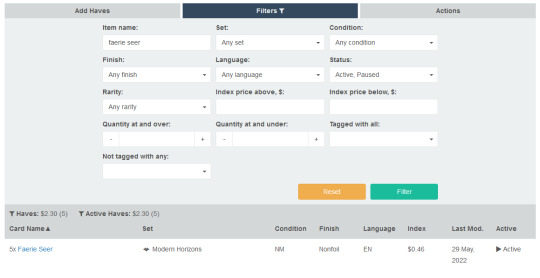
Evidently, I own 5 copies of the card Faerie Seer. Who'd have thought. Unfortunately, the website I use this for, Cardsphere, is shutting down at the start of November. Cardsphere is (was) a platform for trading cards over the mail. You list the cards you have to trade away, you list the cards you want to get, and it matches you with other users. (At least, I think that's how it worked. To be honest, I never actually exchanged any cards this way.) But why is it shutting down?
According to Cardsphere's announcement, "Increased frequency and breadth of releases from WotC greatly disadvantages smaller teams - the work required to keep the card database current as well as customer service effort is now quadruple what it was when Cardsphere launched." I didn't fully sympathize with these difficulties until I started the process of exporting my collection to another website (I chose to move to the website Deckbox). And my friends, it is a process.
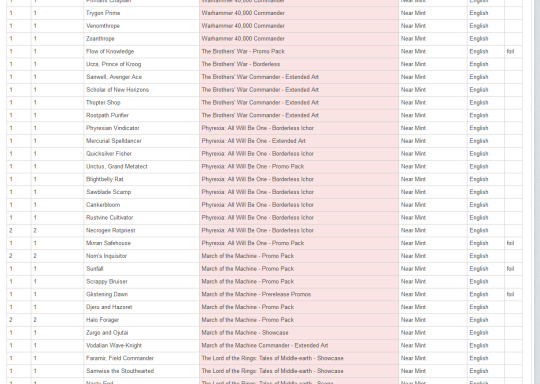
I have 18,377 total cards inventoried. When I imported and checked the csv file Cardsphere generated in Deckbox, it flagged 715 lines of that file as being inconsistent with their database. Most of the inconsistencies fall into one of three categories: A) cards with some secondary name, whether they're double-faced, split cards, or have Adventure [Cardsphere only uses the "primary" name while Deckbox requires both], B) cards where the set name is slightly different between websites [for instance, Cardsphere used "Lord of the Rings" where Deckbox uses "The Lord of the Rings"], or C) cards with special frame treatments [where Cardsphere would append the set name with the name of the treatment, Deckbox keeps the set name the same and differentiates between variants of a card using the collector number].
I haven't even begun to deal with any of the cards in category A, though proportionally there are fewer of them. Category B cards were pretty easy to fix: I just used the find-and-replace tool in Notepad to edit the csv file.

Category C, variants/special frame treatments, has been the real pain. The csv file does not contain collector numbers, so every time I remove the name of the treatment from the end of the set name to make it compatible, that datum loses fidelity. When I import it later, Deckbox will have no way to know which of my Cankerblooms are "regular"-

and which are "Borderless Ichor" variants-

I've been recording all of my variants by hand as I modify them, so that post-import I can go through and fix them as needed:

There are 10 more pages of this, and I'm not quite done.
Look, I'm sure there's a smarter way to do this; I don't have the technical wherewithal to manage this data set eloquently. I got only a few weeks into a data analysis class in college before I dropped out of school altogether. (Not because of that class. Other reasons.)
But let me ask this: does the world really need an alternate version of Cankerbloom? Or any of the variants among the Modern Horizons 2 cards on the above page? Are people cracking booster packs because they really want the showcase version of Voldaren Epicure?


Probably not. The regular version of this common is going for almost twice the value of the "Showcase" version.
As far as I can tell, the only alternate treatment among commons and uncommons (and cheap rare/mythics) that will sometimes increase their price is the retro-frame treatment. By and large, alternate treatments lower the value of cards.
A "regular" Zur and Ojutai is currently $1.00 on TCGplayer.

Its alternate version is only $0.61.

The reasons for this might have more to do with set and collector boosters upping the supply of alternate treatments relative to their original versions. Are there actually more "fancy" Zur and Ojutai's out there than regular ones? It's possible. Again, I don't have the skills (or sales numbers) to give a definitive answer.
On the other hand, the price difference could be reflection of demand. Taste is very subjective. I mean, I don't even think that the alternate version of Zur and Ojutai looks worse than the original; I think it looks dope. I'm sure there are lots of players out there who are glad to have the option of having an alternate version of this card. Even so, personally, if I wanted to pick up a copy of the card for a Commander deck, I'd probably prefer to have the regular version. The reason being that with the deluge of new cards being what it is these days, I want to make it as easy as possible for my opponents to recognize the cards I'm playing.
But at least I'd play Zurgo and Ojutai in a constructed format. At least I'd stop to ask myself which version I'd want to use. I can't even begin to fathom what circumstances would arise for me to wonder which version of Gargadon I'd want to customize a deck of mine with.

You remember Gargadon, right? It's been printed in two whole sets! Modern Horizons 2 and Commander Masters! And in MH2, it got this snazzy alternate treatment:

Why on God's Green Earth does this thing exist? I wasn't a huge fan of the "sketch" treatment to begin with: it felt like the cheapest treatment imaginable. (Why would WotC commission alternate art when they can use unfinished art?) And in the case of Gargadon, it's clear that the art director had no notes. The composition is unchanged.
Moreover, this card is draft chaff. Only 6 decks on MTGGoldfish have Gargadon in them: one Pauper Commander deck and 5 versions from a single user of a Pauper deck. On EDHREC, Gargadon is in only 724 decks (out of 1,448,781 possible decks). This card existed to be played in limited and subsequently buried in piles of unsorted cards.
The only meaningful consequence of the existence of the sketch version of Gargadon is that the people who program the software that support the Magic community, both inside WotC and out, from the web developers who have to build the Card Image Gallery to the folks at Scryfall and TCGplayer, and until recently, the small team at Cardsphere, had to accommodate for it.
Needless to say, Gargadon is not the only card that nobody cares about with an alternate treatment. There are hundreds of them, and scores more coming every month and a half. It's a wide, relentless river of needless complication, and our card infrastructure is drowning in it.
TLDR: I feel that alternate treatments (with the possible exception of retro frames) should be confined to the higher rarities. The game doesn't need alternate treatments for cards that don't see constructed play, and for those commons and uncommons that do see constructed play, that's what promos are for.
Rant over.
1 note
·
View note
Text
The Thing about Alternate Frames
Haven't posted lately. Sorry about that. See, I'm one of those people who not only has their entire Magic card collection painstakingly organized, I also keep a digital record of my collection. That way, if I'm not sure if I own a particular card or not, I can look it up on my computer. It can be handy.

Evidently, I own 5 copies of the card Faerie Seer. Who'd have thought. Unfortunately, the website I use this for, Cardsphere, is shutting down at the start of November. Cardsphere is (was) a platform for trading cards over the mail. You list the cards you have to trade away, you list the cards you want to get, and it matches you with other users. (At least, I think that's how it worked. To be honest, I never actually exchanged any cards this way.) But why is it shutting down?
According to Cardsphere's announcement, "Increased frequency and breadth of releases from WotC greatly disadvantages smaller teams - the work required to keep the card database current as well as customer service effort is now quadruple what it was when Cardsphere launched." I didn't fully sympathize with these difficulties until I started the process of exporting my collection to another website (I chose to move to the website Deckbox). And my friends, it is a process.

I have 18,377 total cards inventoried. When I imported and checked the csv file Cardsphere generated in Deckbox, it flagged 715 lines of that file as being inconsistent with their database. Most of the inconsistencies fall into one of three categories: A) cards with some secondary name, whether they're double-faced, split cards, or have Adventure [Cardsphere only uses the "primary" name while Deckbox requires both], B) cards where the set name is slightly different between websites [for instance, Cardsphere used "Lord of the Rings" where Deckbox uses "The Lord of the Rings"], or C) cards with special frame treatments [where Cardsphere would append the set name with the name of the treatment, Deckbox keeps the set name the same and differentiates between variants of a card using the collector number].
I haven't even begun to deal with any of the cards in category A, though proportionally there are fewer of them. Category B cards were pretty easy to fix: I just used the find-and-replace tool in Notepad to edit the csv file.

Category C, variants/special frame treatments, has been the real pain. The csv file does not contain collector numbers, so every time I remove the name of the treatment from the end of the set name to make it compatible, that datum loses fidelity. When I import it later, Deckbox will have no way to know which of my Cankerblooms are "regular"-

and which are "Borderless Ichor" variants-

I've been recording all of my variants by hand as I modify them, so that post-import I can go through and fix them as needed:

There are 10 more pages of this, and I'm not quite done.
Look, I'm sure there's a smarter way to do this; I don't have the technical wherewithal to manage this data set eloquently. I got only a few weeks into a data analysis class in college before I dropped out of school altogether. (Not because of that class. Other reasons.)
But let me ask this: does the world really need an alternate version of Cankerbloom? Or any of the variants among the Modern Horizons 2 cards on the above page? Are people cracking booster packs because they really want the showcase version of Voldaren Epicure?


Probably not. The regular version of this common is going for almost twice the value of the "Showcase" version.
As far as I can tell, the only alternate treatment among commons and uncommons (and cheap rare/mythics) that will sometimes increase their price is the retro-frame treatment. By and large, alternate treatments lower the value of cards.
A "regular" Zur and Ojutai is currently $1.00 on TCGplayer.

Its alternate version is only $0.61.

The reasons for this might have more to do with set and collector boosters upping the supply of alternate treatments relative to their original versions. Are there actually more "fancy" Zur and Ojutai's out there than regular ones? It's possible. Again, I don't have the skills (or sales numbers) to give a definitive answer.
On the other hand, the price difference could be reflection of demand. Taste is very subjective. I mean, I don't even think that the alternate version of Zur and Ojutai looks worse than the original; I think it looks dope. I'm sure there are lots of players out there who are glad to have the option of having an alternate version of this card. Even so, personally, if I wanted to pick up a copy of the card for a Commander deck, I'd probably prefer to have the regular version. The reason being that with the deluge of new cards being what it is these days, I want to make it as easy as possible for my opponents to recognize the cards I'm playing.
But at least I'd play Zurgo and Ojutai in a constructed format. At least I'd stop to ask myself which version I'd want to use. I can't even begin to fathom what circumstances would arise for me to wonder which version of Gargadon I'd want to customize a deck of mine with.

You remember Gargadon, right? It's been printed in two whole sets! Modern Horizons 2 and Commander Masters! And in MH2, it got this snazzy alternate treatment:

Why on God's Green Earth does this thing exist? I wasn't a huge fan of the "sketch" treatment to begin with: it felt like the cheapest treatment imaginable. (Why would WotC commission alternate art when they can use unfinished art?) And in the case of Gargadon, it's clear that the art director had no notes. The composition is unchanged.
Moreover, this card is draft chaff. Only 6 decks on MTGGoldfish have Gargadon in them: one Pauper Commander deck and 5 versions from a single user of a Pauper deck. On EDHREC, Gargadon is in only 724 decks (out of 1,448,781 possible decks). This card existed to be played in limited and subsequently buried in piles of unsorted cards.
The only meaningful consequence of the existence of the sketch version of Gargadon is that the people who program the software that support the Magic community, both inside WotC and out, from the web developers who have to build the Card Image Gallery to the folks at Scryfall and TCGplayer, and until recently, the small team at Cardsphere, had to accommodate for it.
Needless to say, Gargadon is not the only card that nobody cares about with an alternate treatment. There are hundreds of them, and scores more coming every month and a half. It's a wide, relentless river of needless complication, and our card infrastructure is drowning in it.
TLDR: I feel that alternate treatments (with the possible exception of retro frames) should be confined to the higher rarities. The game doesn't need alternate treatments for cards that don't see constructed play, and for those commons and uncommons that do see constructed play, that's what promos are for.
Rant over.
1 note
·
View note
Text
Sheldon Menery, you will be missed. We'd interacted directly only in the briefest way, but so many aspects of my life I have you to thank for -- both for Commander and your work in the judge program. These communities are better- more welcoming, more accessible, more fun- because of your commitment to them. So thank you.

1 note
·
View note
Text
Wilds of Eldraine - in the 99 of Artisan Decks: Part 1 of 2
A couple of weeks ago I gave my first impression of the 10 uncommon legendary creatures in Wilds of Eldraine. Now the whole set has been previewed, so I'm gonna talk about cards that seem like they'll be good in the 99 of Artisan Commander decks. If you don't know what Artisan Commander is, I made a post about that! In Part 1, I'll be going over White, Blue, and Black cards. Part 2 will cover Red, Green, Artifact, and Multicolored cards.
White
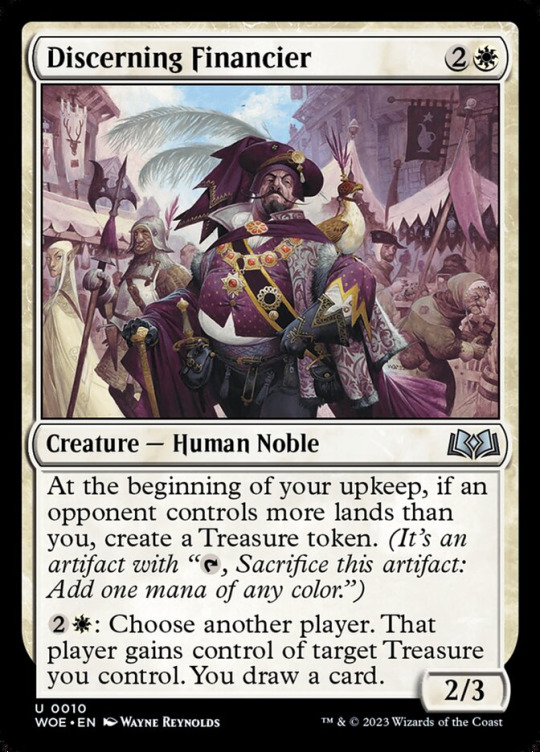
Discerning Financier definitely has potential; its ability is more likely to trigger in multiplayer and it offers you ramp and card advantage. In modest amounts for sure, but any card that does both shouldn't be overlooked. Something else I like about this card is that the payoff for having fewer lands is not, like most cards with this sort of ability trigger, getting another land, which means getting further payoffs more likely. Bounce lands, Karoo, and Guildless Commons can also help get you treasure with the Financier without actually being behind on mana.
I'll be adding this card to my Thalisse deck for sure. She rewards me for making treasure.
Another cute thing you could do is play this card alongside Viridian Revel. Not a lot of WG decks that naturally want treasure production, though; maybe Ich-Tekik paired with Rebbec? That could be cool, actually. I love any excuse to play Fangren Marauder. But I digress!
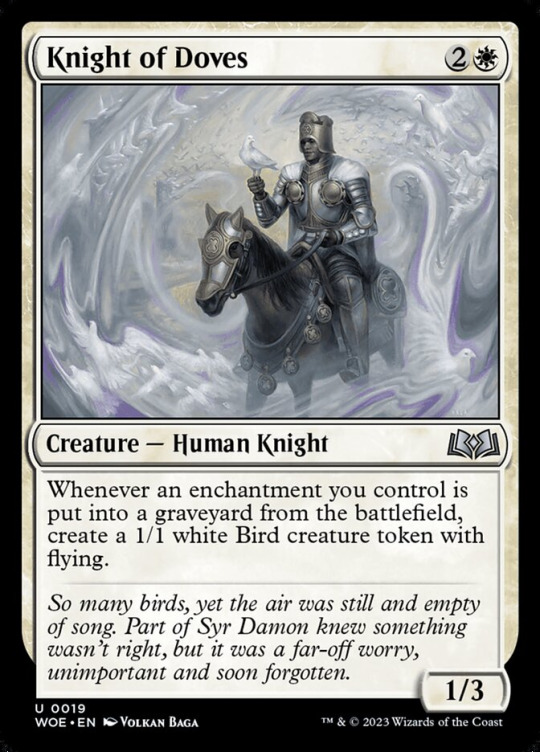
This card was previewed on the same day as the 10 new legends; I mentioned it when I talked about Neva, Stalked by Nightmares. This card goes infinite with Screams from Within, and we got a couple new payoffs that I'll be mentioning below. Knight of Doves could also see play in Siona and other WG aura decks, though it's not quite as powerful there as they don't tend to cycle through their auras as much.
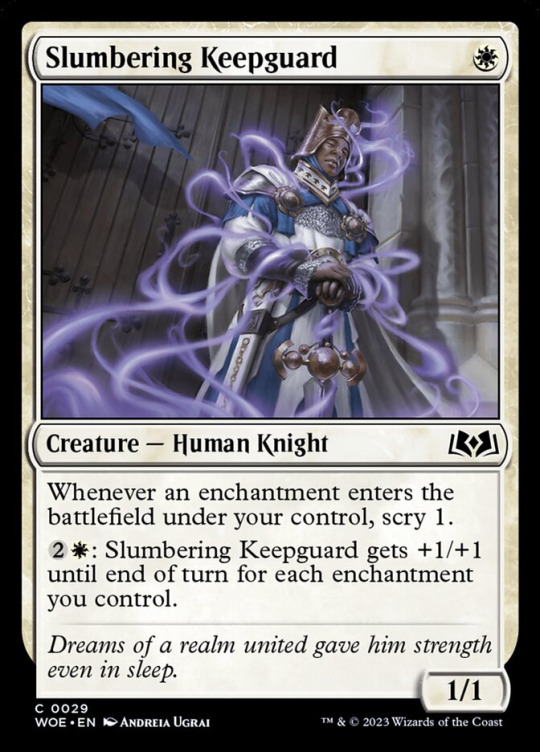
This card could do good work in a GW aura deck. Scrying a card whenever an enchantment enters under your control is nothing to scoff at, and once you've got 7-8 enchantments in play, that activation is no joke.
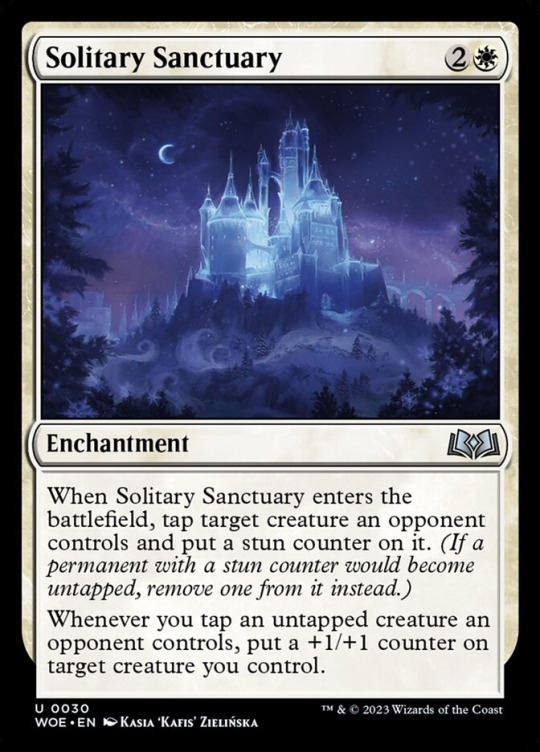
Solitary Sanctuary is a powerful payoff for Sharae of the Numbing Depths decks. No "once per turn" or "one or more" clauses, so it scales really well. Imagine casting Cone of Cold on a crowded board! Now your creatures are huge, and they can attack with impunity!
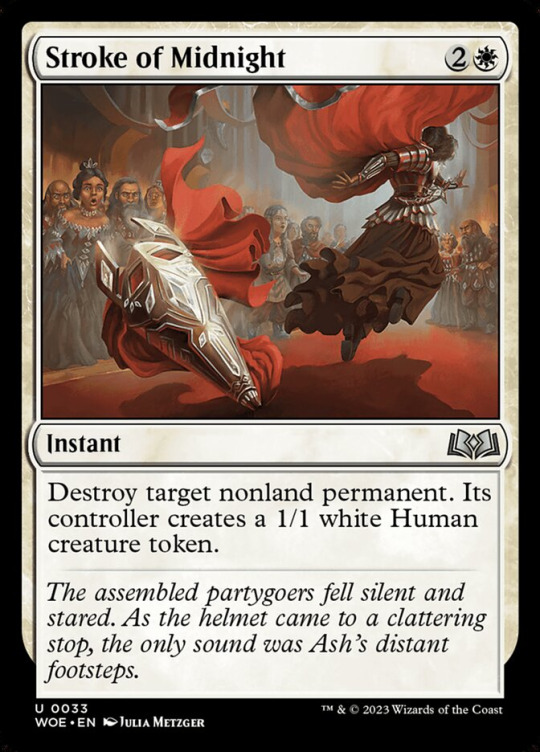
Stroke of Midnight is a card that's instantly replacing Generous Gift in a lot of Commander decks, Artisan or otherwise. It can't hit lands, but how often does one use Generous Gift on a land anyway? Anyway, I expect this card to be even more of an upgrade in Artisan, since the difference between a 3/3 and a 1/1 is more pronounced in Artisan than it is in regular Commander.

The Princess Takes Flight looks extremely abuseable. If you can blink/flicker/return it to your hand before that third chapter ability can trigger, the creature it exiled when it came down is exiled permanently. Expect to see it alongside Reality Acid in mean-spirited Abdel Adrian/Candlekeep Sage lists.
Blue
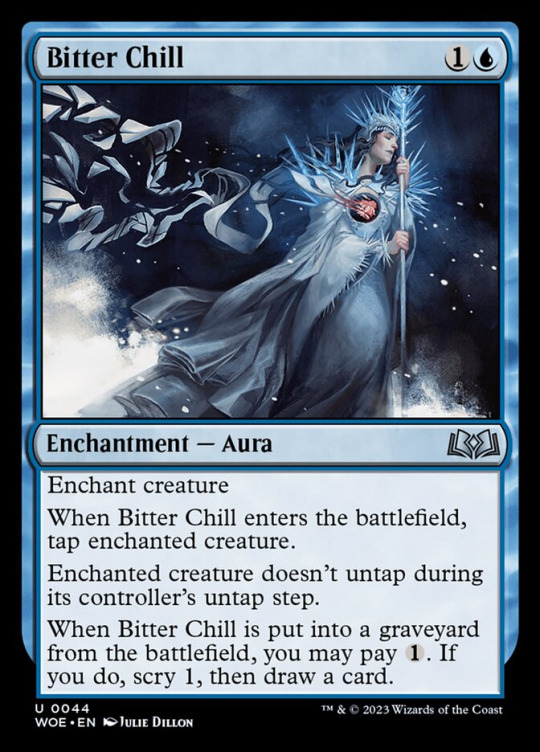
Claustrophobia has come a long way. Now, this isn't quite Kenrith's Transformation, but the comparison to Bitter Chill isn't totally unflattering. Imprisoned in the Moon is probably stronger, but a lot of people (myself included) don't play that card in Artisan because it's only downshifted on Arena; there's no paper copy that's common or uncommon. In any case, Bitter Chill locks down a creature for two mana and has a decent chance of getting you a card back later in the game.
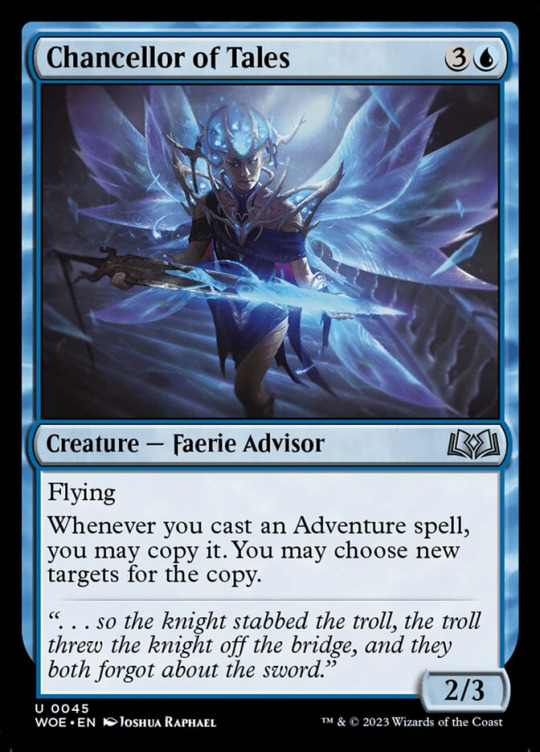
There might be a high enough density of adventure cards now to build a Vega, the Watcher or Lozhan, Dragons' Legacy adventure deck, using Chancellor of Tales and Lucky Clover to double up on your adventures.
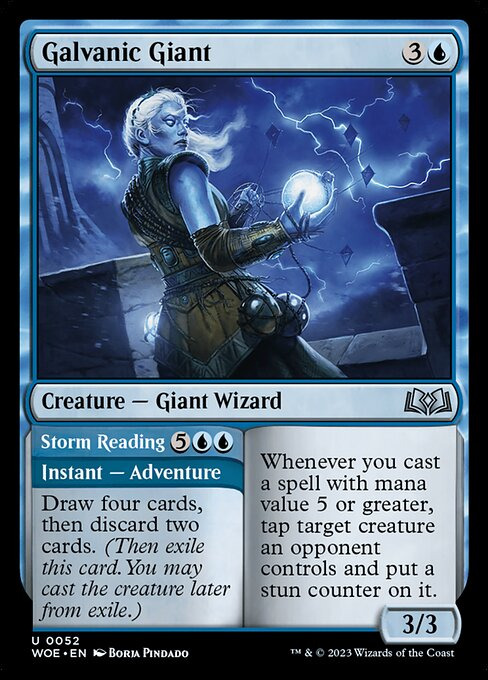
Blue-green ramp decks tend to be very good at building an imposing board state, but can struggle with defending against evasive creatures and closing out the game. Galvanic Giant looks like it will help provide some interaction in Imoti and co.
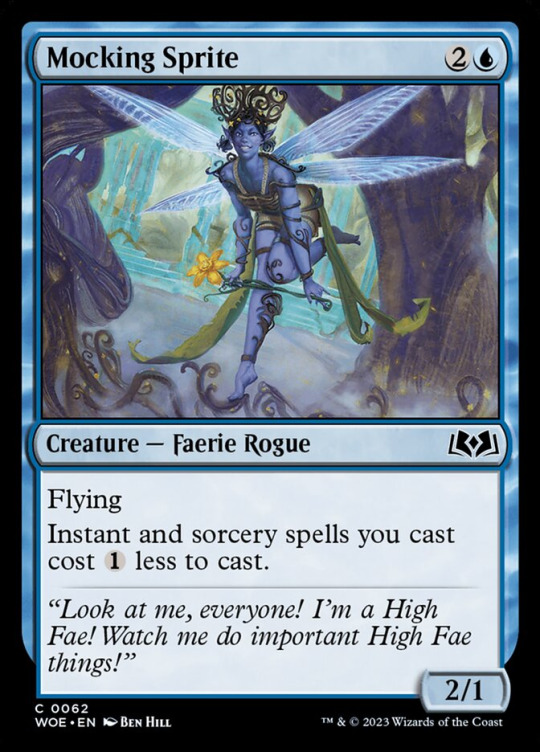
A mono-blue Goblin Electromancer will go into pretty much any deck that plays Goblin Electromancer and into many decks that would play the electromancer but can't because they don't have red. I'll definitely be trying it out in my Rootha deck. There's also a Mono-Blue High Tide deck that I've been brewing (more theorycrafting than something I plan on building in paper) where this fits nicely.
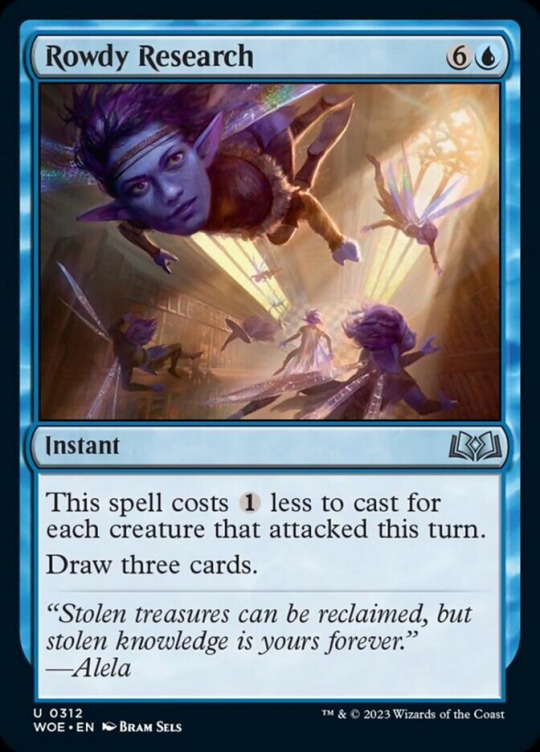
Much like how Treasure Cruise is good in blue decks that put lots of cards into their graveyard, I think Rowdy Research will be good in blue decks that attack with a lot of creatures. That said, there are a lot more blue decks that do the former than there are that do the latter. If you've got Feywild Visitor in the command zone and are running Reconnaissance Mission and Coastal Piracy, Rowdy Research might be a good addition.
This card is also an instant, so you can capitalize on an opponent's big attack to discount it. I don't think that's something you can rely on to make the card good on its own, though. If I had to guess, I'd say that only 20% of games see a player attack with 5+ creatures at once at any point.
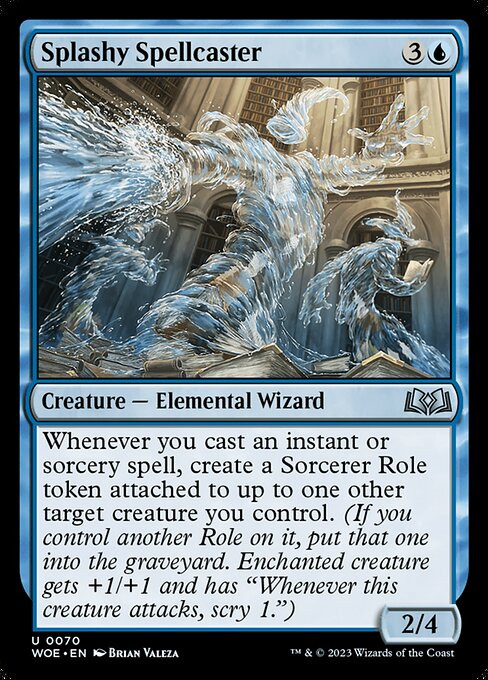
Splashy Spellcaster looks like a fun card. Not especially powerful, since your creatures can only have one role attached to them at a time, but being able to spread around +1/+1 and "Whenever this creature attacks, scry 1" among a couple of your creatures has some utility. Might be decent in Arwen Undomiel. I love the art.

Everything I said about Chancellor of Tales applies here. Keystone card for adventure decks.
Black

Yet another powerful piece for Neva, Stalked by Monsters. That deck will have a number of ways to recur enchantments an indefinite number of times, and Ashiok Reaper's draw effect is mandatory, so you might need to have a way to get it off the battlefield so you don't accidentally deck yourself. The deck will probably have sac outlets anyway so that it can recur Takklemaggot (shoutout to Mavis on the Artisan discord for that find!).

An obvious inclusion in the green-black food deck with Greta, Sweettooth Scourge. Getting a creature token whenever you sacrifice a food complements Witch's Oven and/or Cirith Ungol Patrol fantastically.

A mono-colored uncommon legendary? Weird that there's only one, but sure, why not? Old Flitterfang seems pretty good as a source of food tokens, again in the Greta deck.

Like Knight of Doves, we saw this card alongside Neva. It does all the stuff that Knight of Doves does, essentially, because I don't think the tokens either make are going to stick around long enough for their ability to fly/block to matter. A powerful common!
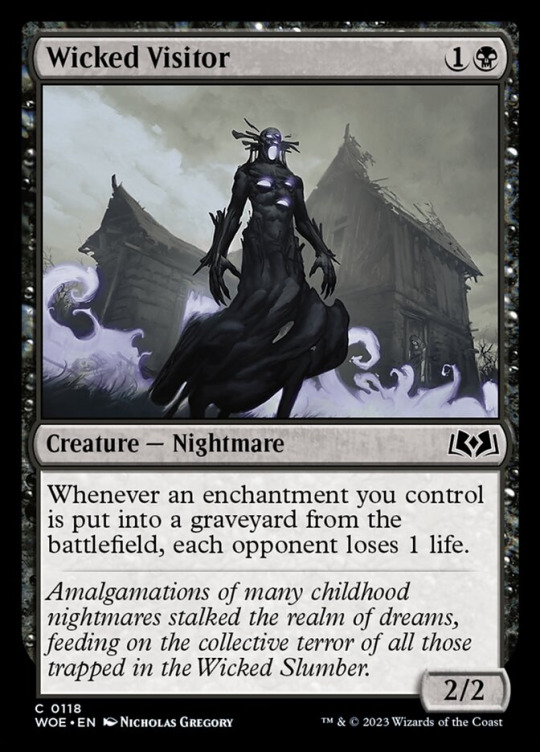
A wincon for Neva. Simple enough.

A downshift! Dark Tutelage probably deserves a spot in some Artisan decks, but I wouldn't declare it an instant staple or anything. It'll be best in decks with low curves and/or topdeck manipulation to minimize the life loss. Decks like Neva! How about that!?
And that's all the White, Blue, and Black cards! See Part 2 for Red, Green, Multicolor, and Artifacts.
0 notes
Text
Wilds of Eldraine - in the 99 of Artisan Decks: Part 2 of 2
Find Part 1 here!
Red

This card screams 'Zada'-- that deck is very good at drawing lots of cards and making lots of creatures, and any card that can draw a bunch of cards while also generating mana has the potential to turn the dial up to 11. The only speedbump here is that the vast majority of creature tokens that Zada decks create only have 1 toughness, so we have to do something to protect them before we can start flicking coins. Kick in the Door and Blazing Crescendo give them some extra toughness, as well as the new cards Monstrous Rage and Witch's Mark. Otherworldly Outburst lets you upgrade your creatures when they die. And once we've got those cards, we might as well run Spawning Breath, too.

A Trumpet Blast with a dual role in aristocrats decks? That seems pretty good.

Hearth Elemental takes some maneuvering to get maximum value from it, but if you do, it's essentially a 3-mana 3/4 that draws you two cards; if you cast Stoke Genius and don't have any cards left in hand, you don't have to discard anything and you draw 2, then, if you have enough of the appropriate cards in your graveyard, you can cast the creature half for a single red mana.

If your red voltron deck can make good use of the adventure half of Two-Headed Hunter, Twice the Rage, adding the option of getting a 5/4 menace creature for 5 mana afterwards is nothing to scoff at. For example, I recently played against a Mr. Orfeo, the Boulder deck that this giant would probably feel at home in.

Unruly Catapult is the latest in a line of creatures that tap to deal 1 damage to each opponent and becomes untapped when you cast a certain type of spell. They are underwhelming on their lonesome, but can enable some very powerful things. In a Malcolm, Keen-Eyed Navigator and/or Breeches, Brazen Plunderer deck, if you change the Catapult from a Construct into a Pirate (with something like Amoeboid Changeling), you get three treasures and/or impulse draw from each of your opponents' libraries. You can also pair it with a Curiosity effect to draw three cards for every activation.
Green
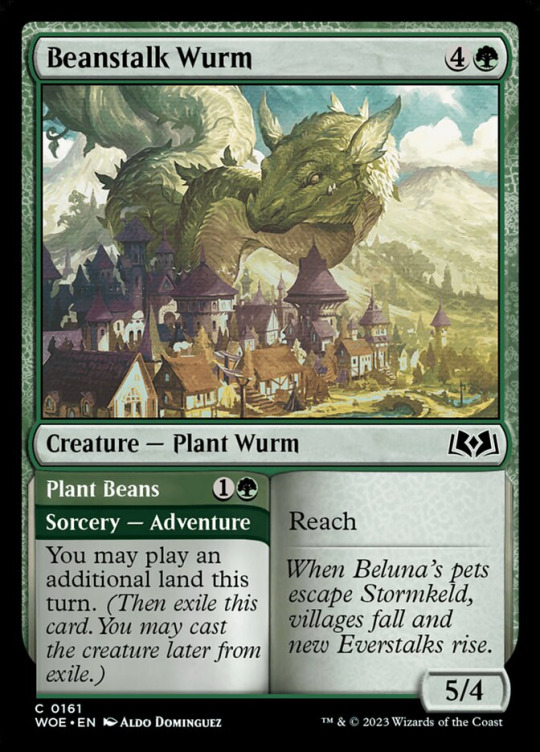
There are a number of big green creatures that can help you ramp early in the game if you need them to, but they're all 6-mana or greater: Krosan Tusker, Shefet Monitor, Greater Tanuki, Beanstalk Giant, etc. Explore-type effects are generally less reliable than Rampant Growth-type effects, but Beanstalk Wurm's unique spot on the curve might get it into some decks. Having reach is another big point in its favor as green ramp decks often have a difficult time defending themselves against fliers.
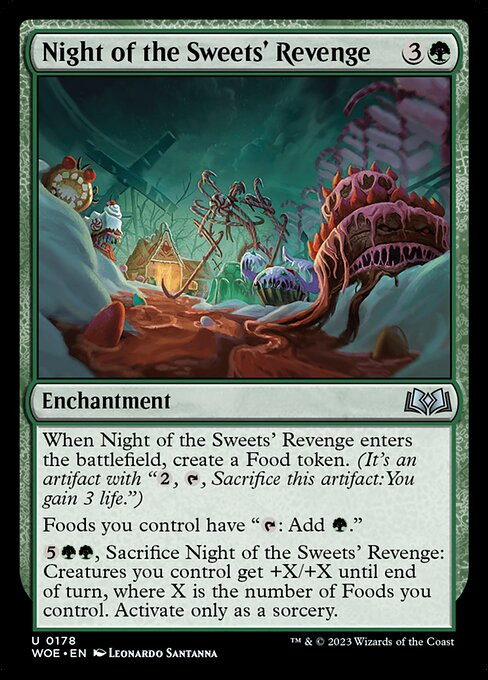
When I gave my first impression of Greta, Sweettooth Scourge, I wrote that "I expect the deck to be functional, but not especially powerful unless we get some exceptional food payoffs at common/uncommon". Well, this is an exceptional food payoff at uncommon. This will be the card that food decks will want to draw the most; having Night of the Sweets' Revenge on the battlefield will give them access to a lot of additional mana and a win condition.

Just as green decks that care about +1/+1 counters tend to run Snakeskin Veil over Tamiyo's Safekeeping, I expect decks that care about auras or enchantments to run Royal Treatment.
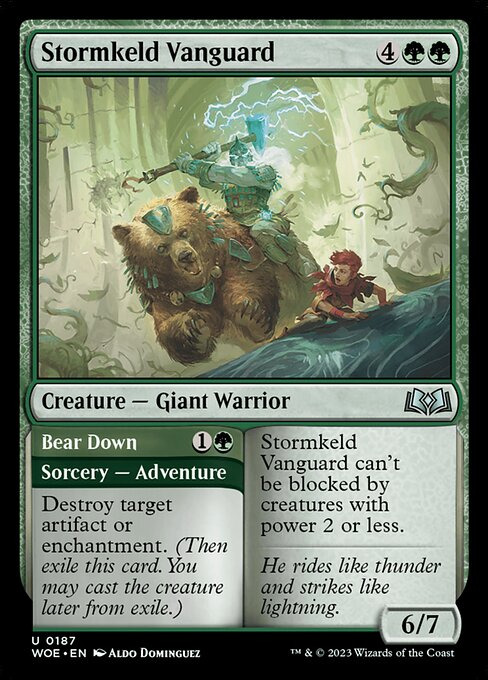
A very functional Naturalize (sorcery speed, but that's ok) stapled to a 6-mana 6/7 with an evasion ability!? Stormkeld Vanguard looks excellent. I expect to be playing with and against this card a lot.
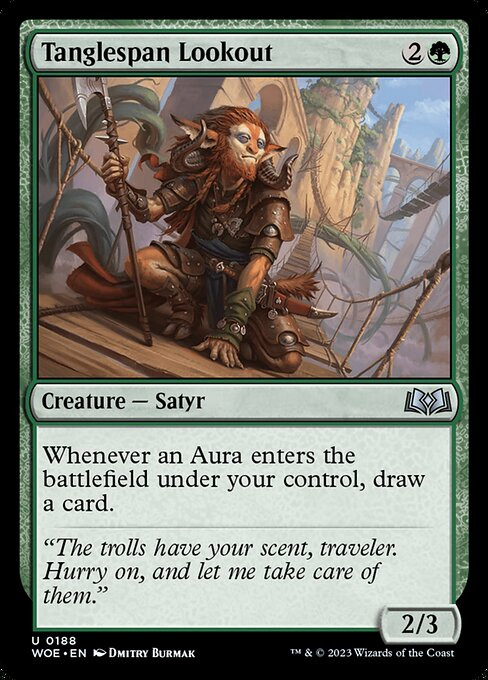
Most of the Artisan 'enchantress' decks out there are aura-centric as it is, so Tanglespan Lookout joins the ranks of Mesa Enchantress, Satyr Enchanter, Gnarlback Rhino, and Season of Growth; we're getting closer to the critical mass of enchantress effects needed for these decks to become truly degenerate. Note that Tanglespan Lookout's ability triggers upon etb of an aura and not on cast, which means it draws when you attach a role token to a creature or flicker an aura with something like Flicker of Fate.
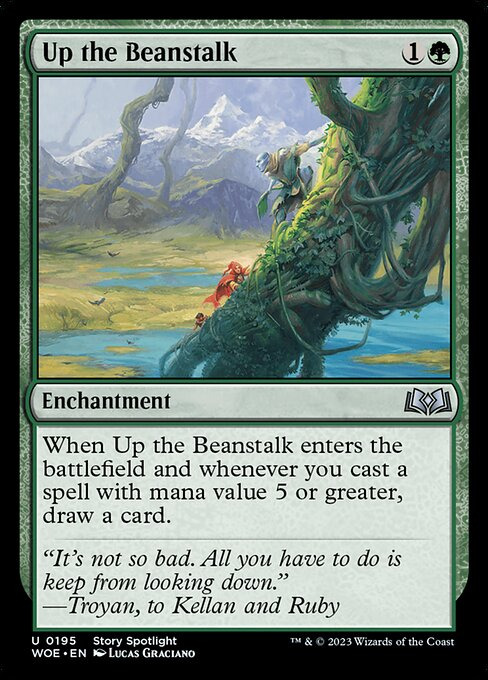
Normally I'd advise caution about cards that trigger off of doing high-mv stuff, since the average deck only has 8-10 cards with 5 mv or greater. But Up the Beanstalk draws a card when it enters the battlefield draws a card when it enters the battlefield, so the floor here is super low. You only need to trigger it one time for it to be good, and obviously a ramp deck or a deck that is otherwise built to cast big spells should be able to trigger it more than once. An excellent card.
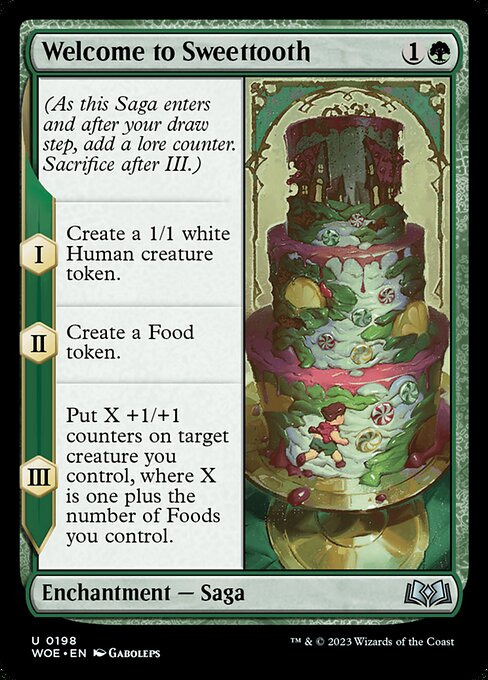
This isn't quite the marquee payoff for food decks that Night of the Sweets' Revenge is, but it's still good. The two separate instances of token creation synergizes well with Peregrin Took.
Multicolored
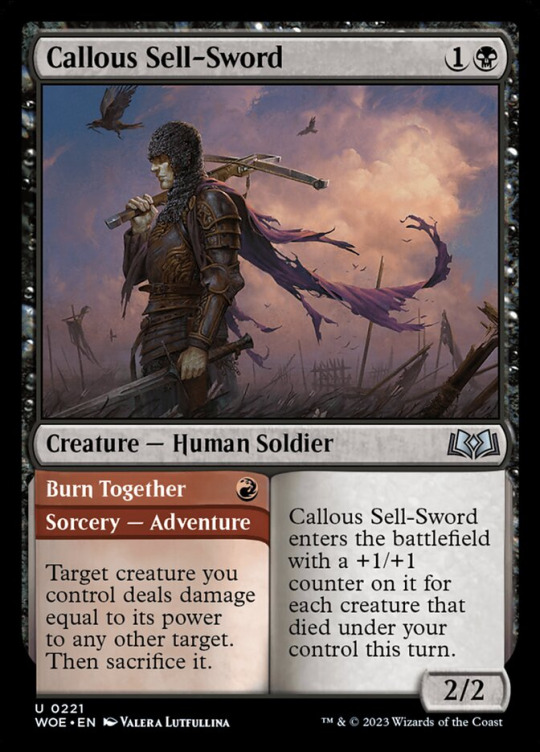
Callous Sell-Sword fits well into Juri for a couple of reasons. First and foremost, Fling effects are a crucial part of eliminating players once you've built up a gigantic Juri, so having that attached to a creature is helpful. Second, Callous Sell-Sword is another way to generate a large creature by sacrificing small creatures, which is good in a pinch if you've drawn an extra fling effect.
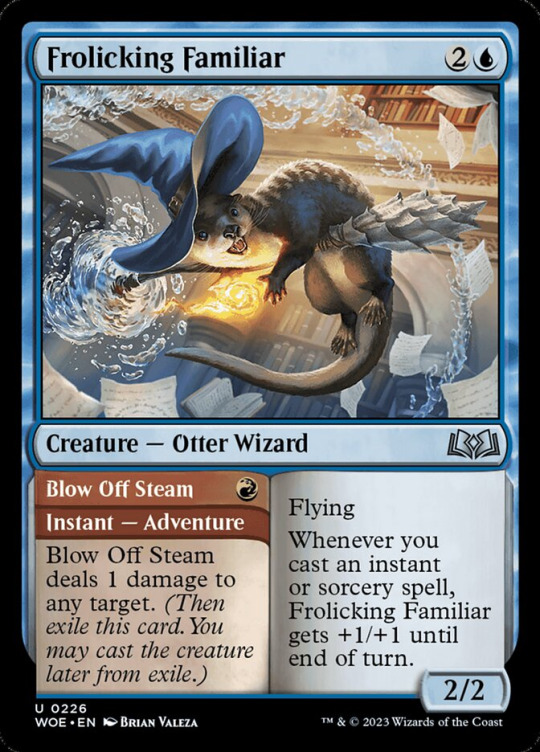
Likewise, Frolicking Familiar fills both roles needed in Balmor decks; it's a small, evasive creature that gets pumped by instants/sorceries in addition to being an instant. It's even a wizard, in case you're trying to optimize with Adeliz, the Cinder Wind!
Also, it's adorable.
Colorless
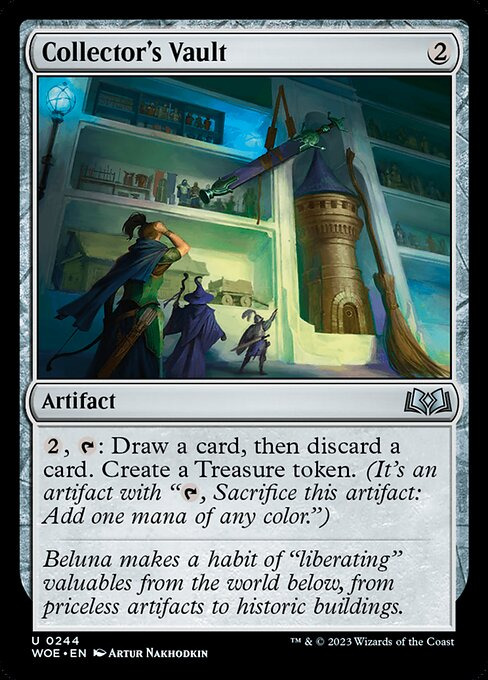
Collector's Vault looks like a serviceable little card selection/ramp piece. It might find a spot in decks that get extra value from treasure tokens like Juri and Thalisse.
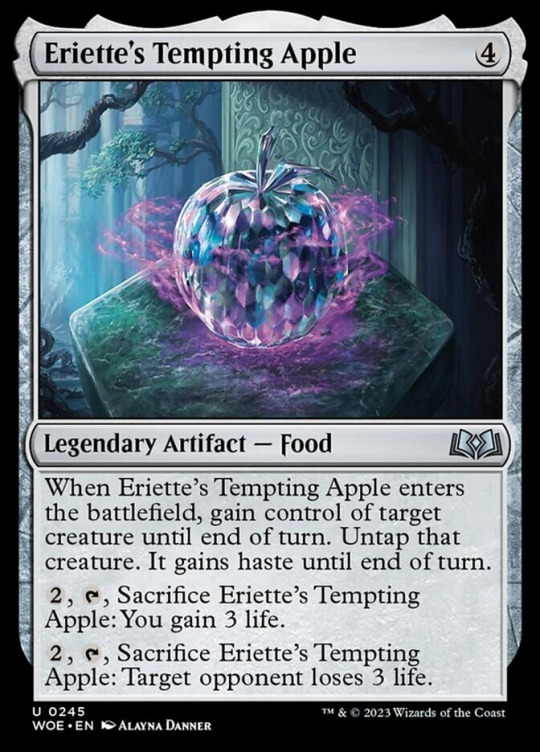
To be honest, I don't know where Eriette's Tempting Apple fits into the format. It's entirely possible that no one will use it. I did want to note it, though, because it's the only colorless card with a Threaten effect (ignoring Turn Against). Blue has had Ray of Command, but now green, white, and black have access to the effect.
Whew. That was a ton of cards! This is my first time writing a set review like this, but I suspect that this is a higher density of Artisan-relevant cards than the average Standard-legal set. A lot of the draft archetypes here overlap with existing Artisan deck archetypes, or push themes that weren't quite there before into viability. There's plenty to be excited about!
0 notes
Text
Contextualizing Card Evaluations in Commander
Is Hedron Archive a good card?

Some say yes. Some say no. How about Temple of the False God?
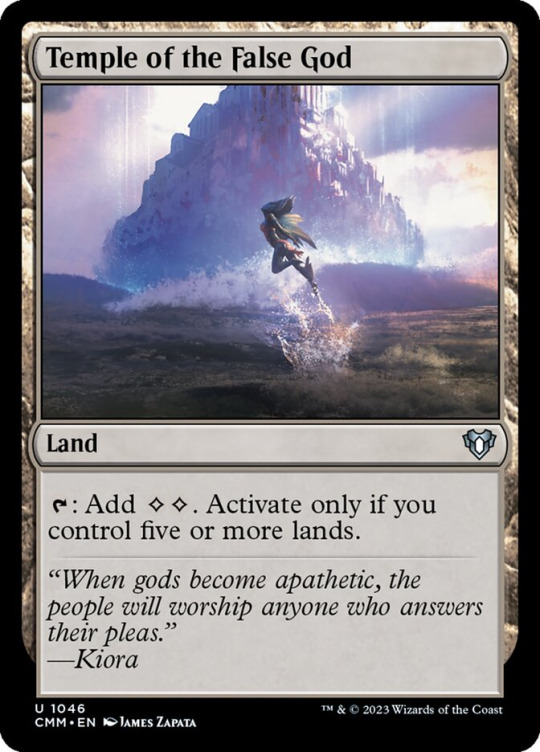
Some say yes, some say no. Many of those who say no say that the people who say yes are wrong, and bad at Magic/Commander, and a variety of other ad hominem attacks, because, well, the internet doesn't generally reward nuance and empathy. (But that's a whole other thing.) Is Gerrard's Battle Cry a good card?

I think most Commander players' response to that question would be, "What's 'Gerrard's Battle Cry'?" And upon seeing it, I think the most common response would be, "No, not really." I bring up Gerrard's Battle Cry not because I think it's a hidden gem that I think you should give a go in your Commander deck. This Tempest rare is only 49 cents for a reason: it's not a great rate for its effect. There are much more efficient ways for White decks to pump up all their creatures, from Cathar's Crusade to Akroma's Will to Inspiring Leader. I bring it up because of an interaction I had in the comments of a YouTube video (I know, I know). Someone commented on a "Good Commander Budget Cards" video, citing Gerrard's Battle Cry as a cheap card that they've found to be pretty good. My first instinct was to respond with, "There are much better ways to pump your creatures in white on a budget, like Inspiring Leader or Valor in Akros." But I stopped myself. Who am I to tell this person, who's been playing with this card and found it to be good, that they're (essentially) Doing Magic Wrong? Yeah, it's possible that they're underestimating the tempo loss from activating such a taxing activation cost... but probably not! They've probably killed their friends with it! If they're opinion of the card is high, it's probably from their lived experience playing Magic; presumably their play group probably doesn't play with a lot of board wipes and so this person gets a lot of creatures to stick on the board. Instead, I recommended they try the card Leonin Sun Standard.

Like Gerrard's Battle Cry, the Sun Standard is less than 50 cents. It costs one more mana to get onto the battlefield, but its activation costs one less. This person seemed to appreciate the recommendation, and I moved on feeling a little better about my online presence.
For those of us living in the zeitgeist of online Commander content-- using EDHREC, listening to podcasts, and watching Commander gameplay videos-- it's easy to imagine the Commander landscape as more homogenized than it is. We go to CommandFests and encounter seas of people who have decks with fetchlands and Esper Sentinels and Constant Mists. The more enfranchised we are, the more we interact disproportionately with other enfranchised players. It's easy to forget that the majority of people who play Magic have never gone to an LGS; they play at home, at school/work, or at a friend's house. Geography can play a role, too. I live in a highly suburban area, and within an hour's drive I have a handful of LGS's I could attend to fling cardboard, and while there are slight differences in the respective Commander metagames at those stores, I can bring the same suite of decks to any of them and have basically similar experiences. However I have, on a few occasions, found myself in more remote game stores: a couple out in rural Pennsylvania during college, and one by my grandparents' in rural Virginia. That latter store tends to host Commander games with five or sometimes six players, and they take forever. One game in particular sticks in my mind: one player had a Tajic, Blade of the Legion deck built all around board wipes. Creature board wipes and land board wipes.
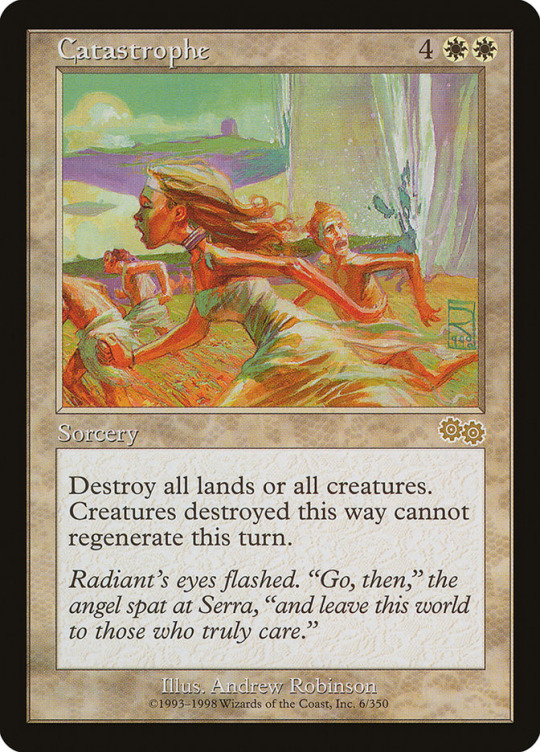
More often than not the bastard didn't even have two other creatures to attack with. He just swung in for two damage with Tajic every five minutes. I hung in there, doing what I could, but some of the other players had come to the table with what could only be described as Draft Chaff Commander decks; they were playing out cards like Syndic of Tithes and Stonefare Crocodile. Like lambs to the slaughter. A very, very slow slaughter. I remember saying something to the effect of "Y'all live like this?" before scooping and heading back to my grandparents' house. A friend of mine told me of a playgroup of his ex-girlfriend's where all the players in the game would take their turns at the same time. You know how in a game of Two-Headed Giant, you and your teammate will untap, draw your cards, and go to combat at the same time? Like that, except everyone's declaring attackers and blockers at each other at once in a messy Magic thunderdome. As a judge, I shudder to picture it.
The point being, though, is that there is far greater variety in Commander playgroups and localized metagames than we tend to give credit, and that variety can cause folks to have drastically different opinions about the same card. In another comment from the same YouTube video, someone said that they don't think the signet cycle is very good; in their playgroup there are a lot of artifact board wipes. They'd probably be down on Hedron Archive, too, but might rate it slightly higher than Thran Dynamo. For those living in the thunderdome, the card Flurry of Wings would probably be pretty good. For the poor fools playing against Tajic.Board Wipes.deck, Sacred Ground might be an all-star.

These are extreme examples. Lots of disagreements around cards like Temple of the False God come down to the speed of a Commander playgroup's games, which is highly correlated to the general power level they play at. If games regularly last 11+ turns, the Temple is a good deal, since you have a lot more turns where it can tap for two mana. If your games generally end around turn seven or eight, it looks a lot worse. (That's not to say that sometimes individuals can't just be bad at evaluating cards. It's easy to remember all the times that Rise of the Dark Realms won you the game- it's harder to recall how often it gets stuck in your hand; opportunity cost is a difficult thing to judge, and confirmation bias can also muddy the waters. And if someone finds that Temple of the False God is too often their fourth land but is playing it in a deck with only 30 lands, well then, yeah, that's kind of on them.) The next time you find yourself disagreeing with someone about the relative strength of a card in Commander, and it isn't someone from your regular playgroup, consider that their usual Commander experience might be different from yours. Feel free to ask! Whether they play against a lot of modified precons, or with folks who are less experienced, or if they play exclusively high-powered Commander or even cEDH-- that info can offer the conversation a lot of context. Just as it is with disagreements about things in everyday life-- once you understand where the other person is coming from, finding common ground is a lot easier.
0 notes
